12 Best Things to Do in Korca: Hidden Gem in Albania
20 min readAll the best things to do in Korca, a hidden gem in Albania.
The city of Korca (Korçë / Korça) is located off the usual beaten track in southeastern Albania, close to the Greek border. With a very particular character and atmosphere, it feels very different to most other places in Albania.
The incredible museums, restored Old Bazaar and gorgeous heritage architecture puts Korca up there among my favourite small cities in the region.
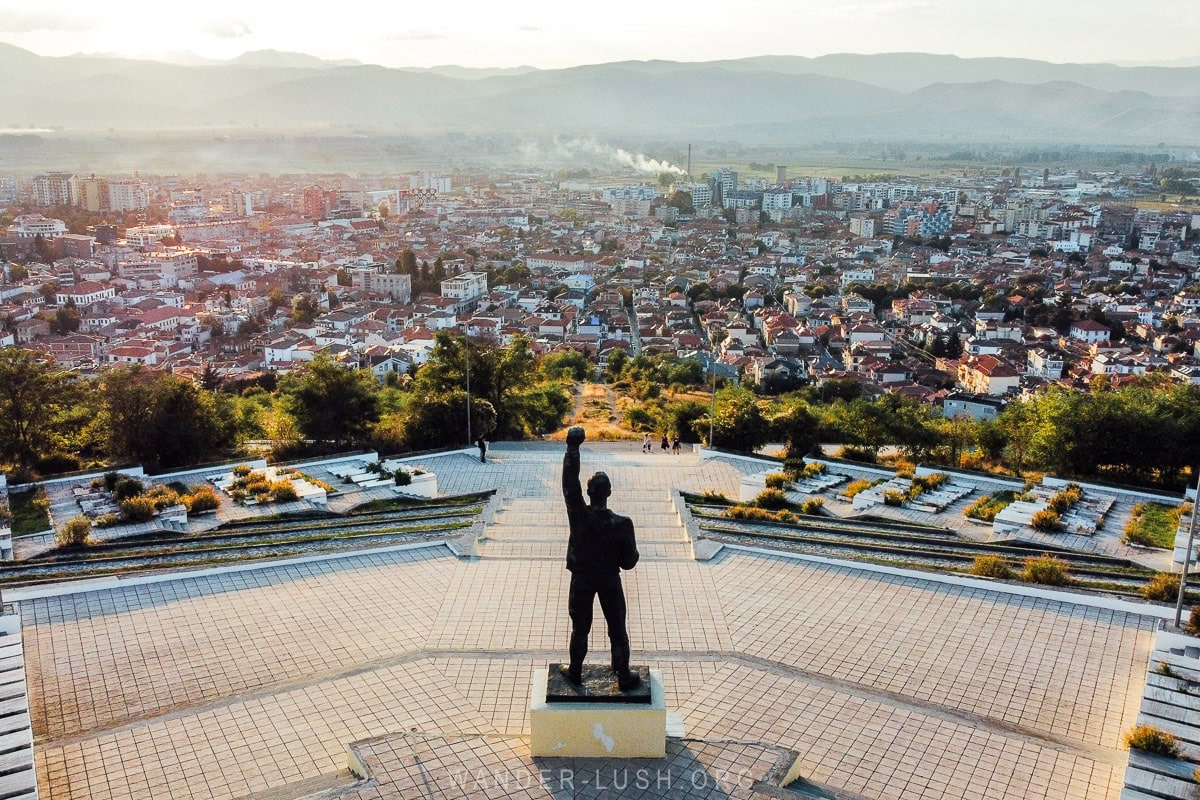
When I was planning our first trip around the Balkans back in 2017, I made a point of including Korca in our Albania itinerary – even if it did involve making a pretty big detour.
When we recently returned to Albania to do a road trip, we revisited Korca… Twice! That’s how much I love this place.
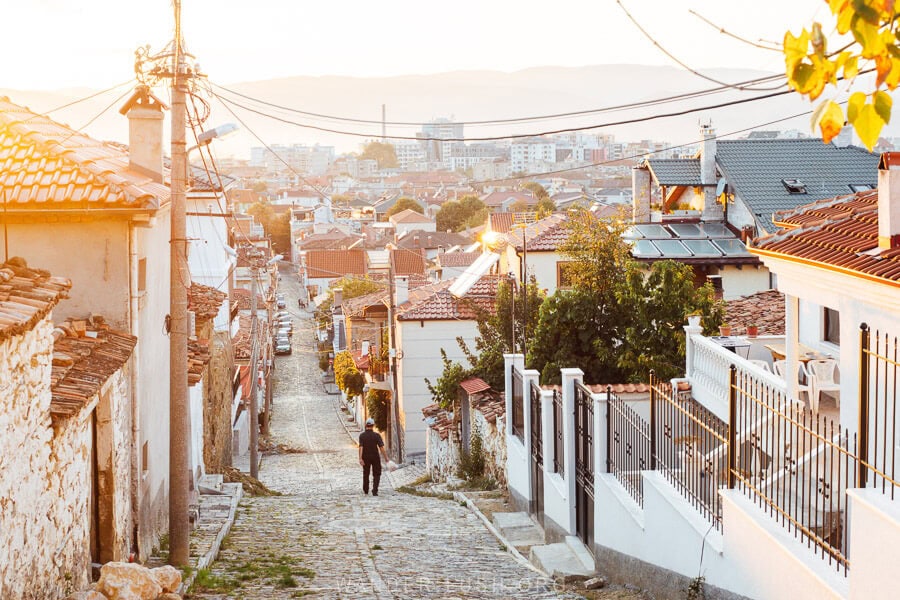
Home to around 60,000 people, Korca (pronounced ‘kor-cha’) has a history that dates back to the 13th century. Within Albania, it is known being a hub of culture and education – most famously for being home to the first ever Albanian language school.
The city is defined by green spaces, beer gardens, and a large university campus. It has a palpable Greek influence, and a strong Orthodox tradition. The city’s 1930s Italian Rationalist architecture is also worth noting.
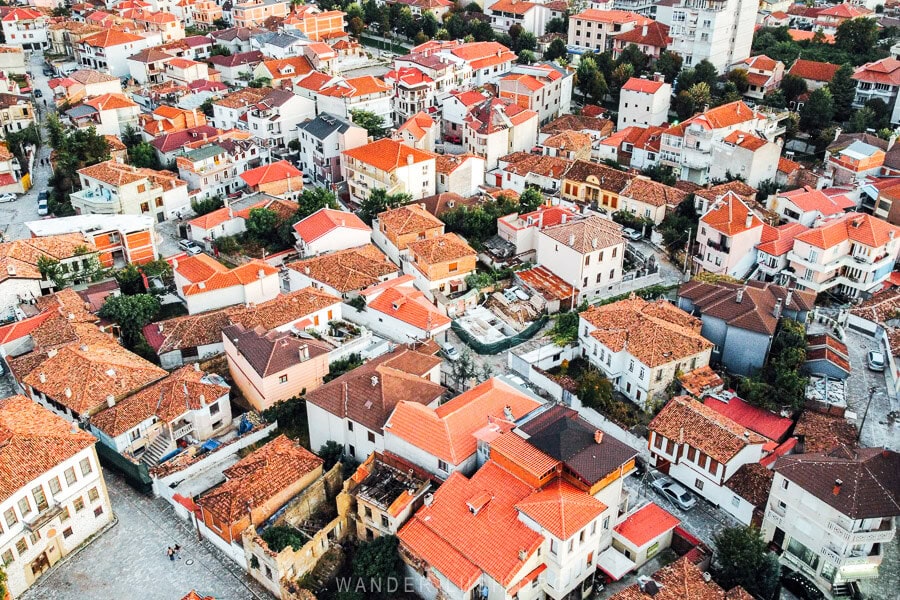
Korca gets its rather idyllic nickname ‘The City of Serenades’ from the love ballads men used to belt out from the balconies and courtyards of their enigmatic European villas.
Sadly, the sounds of guitar and mandolin don’t fill the streets of Korca today like they did in the 1920s – but the town still has the same charm and a feeling of nostalgia.
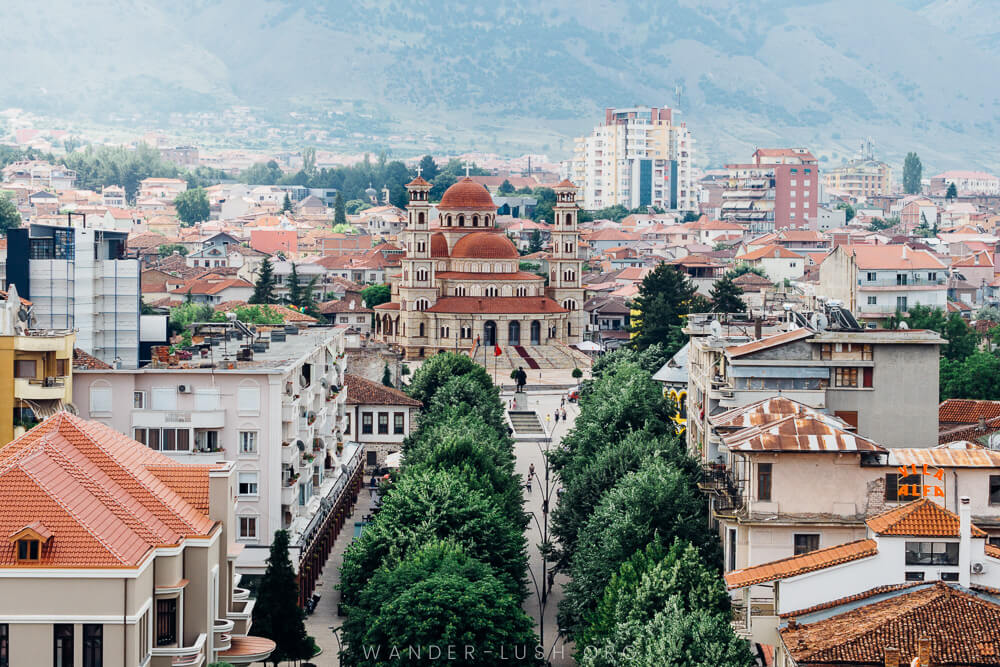
Depending on your direction of travel, there’s a good chance Korca will either be the first or the last stop on your Albania trip. Either way, you will immediately notice how different it feels to the rest of the country.
Not many foreign tourists venture to Korca, but I think it’s more than worthy of your time. This guide covers all the best things to do in Korca and will hopefully convince you to spend a couple of days in this underrated city near the Greek-North Macedonian border.
Please note: This post contains affiliate links, meaning I may earn a commission if you make a purchase by clicking a link (at no extra cost to you). Learn more.
When is the best time to visit Korca?
One of the most popular times to visit Korca is actually during winter. Bigell Ski Resort is located just outside the city, and many tourists flock here to see snow and join in the city’s famous Christmas markets.
Spring and summer are festival months. Come April, Korca hosts a two-week-long Spring Fair with outdoor markets and parades. In June, there’s Carnival, in July the Lakror Fest (celebrating the city’s favourite pie and its culinary traditions), in August the Beer Fest, and in October, the Apple Fest.
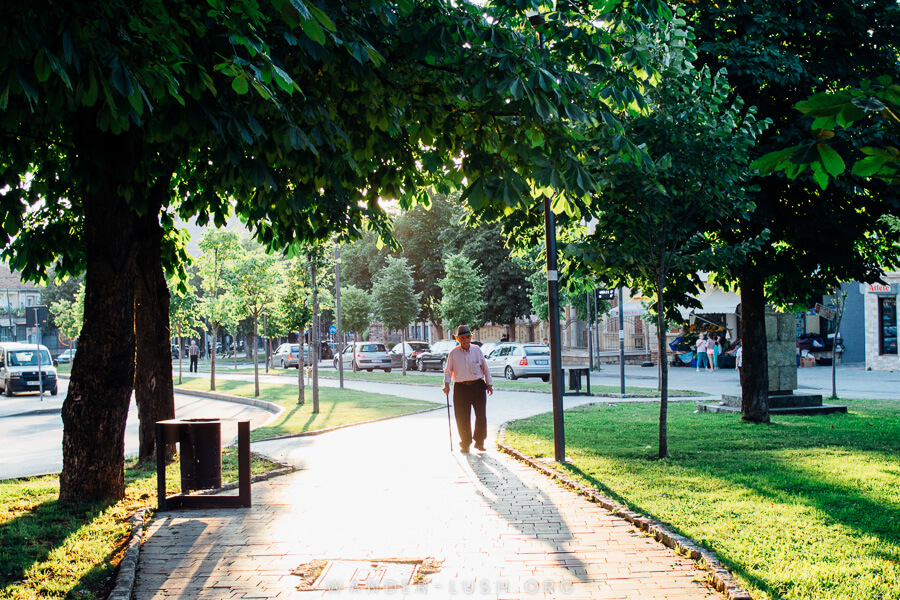
My three visits to Korca were in summer and autumn. I wasn’t lucky enough to stumble on any festivals, but I still loved travelling at this time of year – the weather is mild, and it’s not at all crowded.
Where to stay in Korca
Boutique: Set inside a historic inn inside the Old Bazaar, Hani I Pazarit features a sweet internal courtyard and an acclaimed restaurant. Rooms are opulently decorated (even if they are a little boxy), with wooden bathtubs and exposed brick walls. Check prices and availability here on Booking.com.
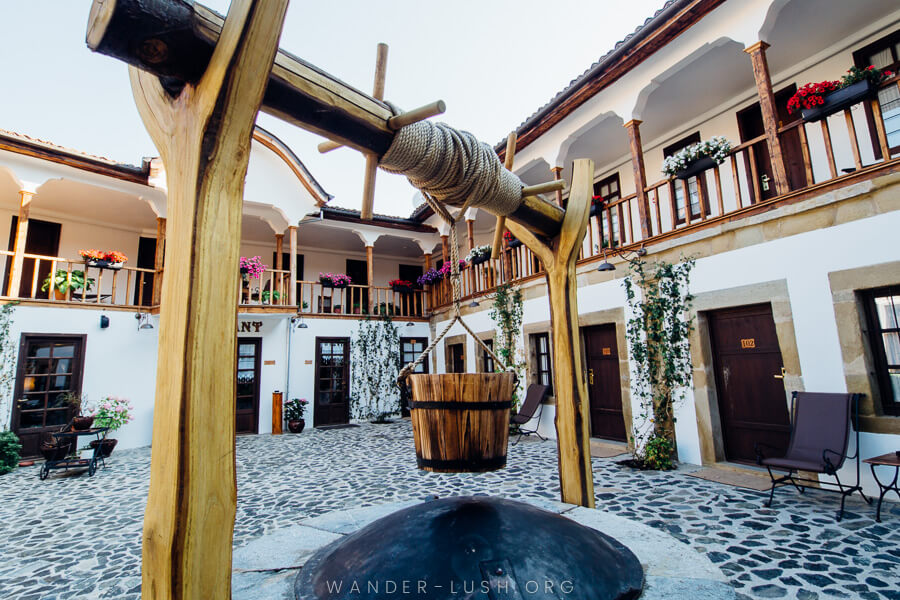
Luxury: Life Gallery Hotel is a modern and minimal boutique choice with white-washed timber throughout, floor-to-ceiling windows, and in some rooms, a free-standing bath. Check prices and availability here on Booking.com.
Mid-range: Villa Domenico is a small hotel-restaurant located inside the Old Bazaar. We stayed here on our most recent visit and were very happy with our choice. Rooms are new and thoughtfully designed, the location is perfect, and staff are super friendly. The breakfast (featuring all-you-can-eat donuts) was the best we had in Albania. Check prices and availability here on Booking.com.
Airbnb: Stone-and-timber Art House is exquisitely decorated with antiques and Albanian carpets. It’s located in a local neighbourhood walking distance from the cathedral.
12 things to do in Korca (Korçë)
Korca is a relatively small and compact city that is easy to explore on foot. You will need 1-2 full days to cover all the attractions and points of interest mentioned here – depending on your pace and how many of the museums you choose to visit.
I have tried to organise the list below into a logical Korca itinerary that you can easily replicate. At the end, you will find a map of Korca with all these points pinned.
Allow an extra day for a side trip to Voskopoja.
1. Go cafe hopping in the Pazari I Vjeter (Korca Bazaar)
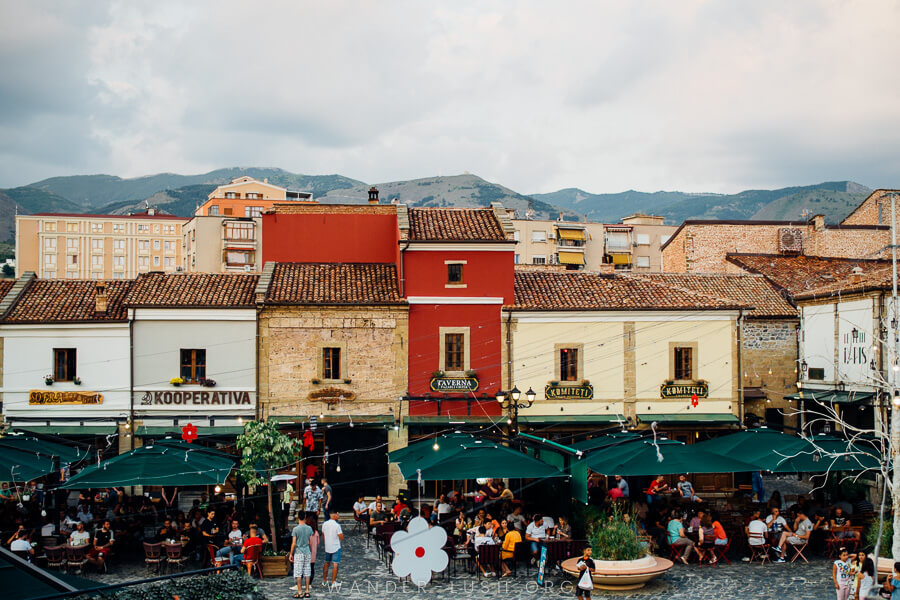
In the 19th and 20th centuries, Korca’s Ottoman-style bazaar was the biggest marketplace in Albania. It accommodated more than 1,000 stores and two renowned inns, the Old Elbasan and Old Monastery. It was completely refurbished in 2015, and is probably the Balkans‘ best example of how an Old Bazaar can be reborn as a vibrant community space.
A central cobbled square is surrounded by small cafes and tavernas, their tables spilling out onto the streets. In the late afternoon, families and groups of friends congregate under the awnings, making this the most atmospheric time to visit. If you want to see Albanian coffee culture on full display, this is the place to be!
There are a couple of cool cafes here, including a branch of Komiteti Kafe Muzeum and the Communist-themed Kooperativa, which reminds me of Cong in Hanoi.
If you’re looking for something more substantial, Fix si Qëmoti is a nice spot for a local meal. Needless to say, locally brewed Birra Korca is the beverage of choice this taverna restaurant.
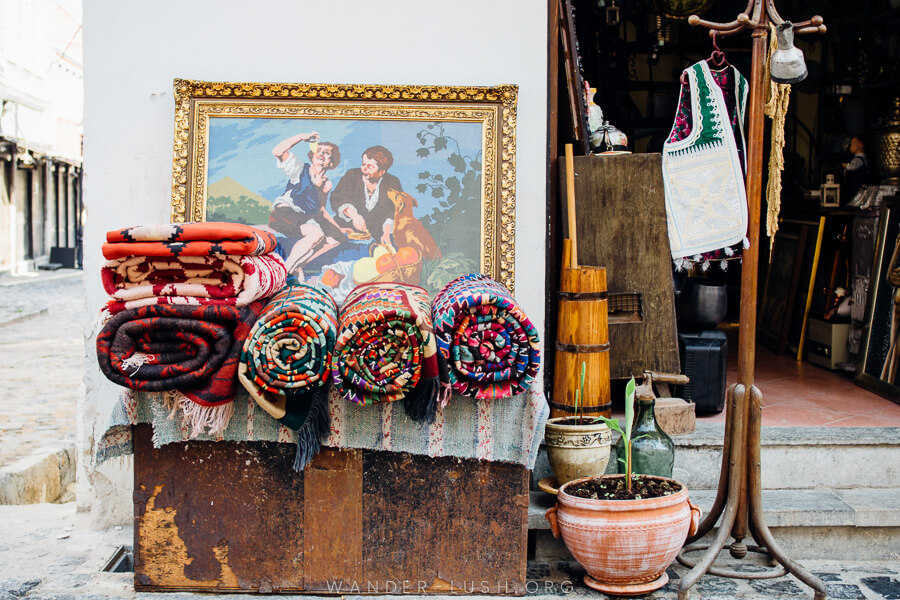
Winding pedestrianised streets and narrow alleyways branch off from the main square, leading to little boutiques and galleries. Most of them appear to be selling very touristic souvenirs (mass produced carpets and the like). But it’s still fun to browse the colourful display.
I was personally more interested in the antiques and artisan workshops. On our last visit, we saw a blacksmith working inside one of the stores.
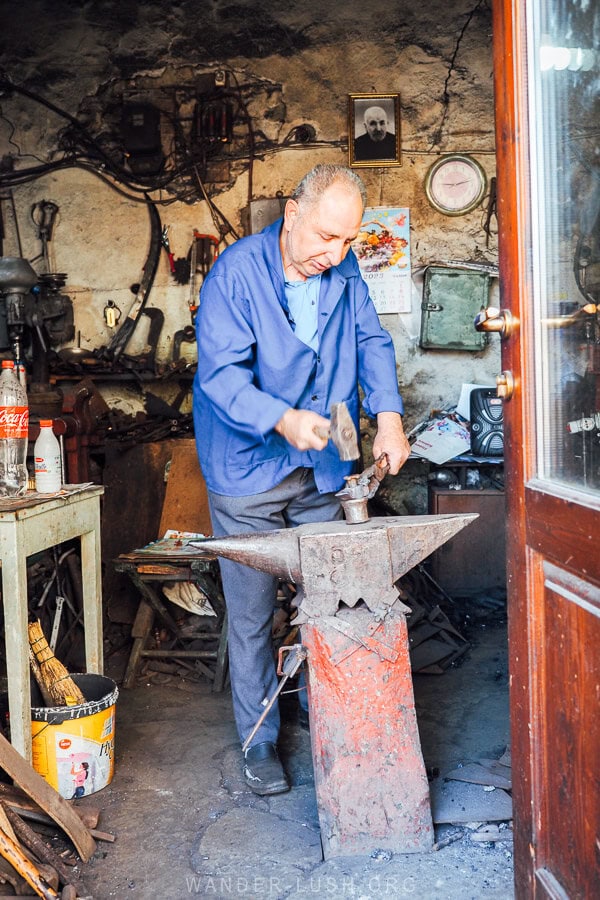
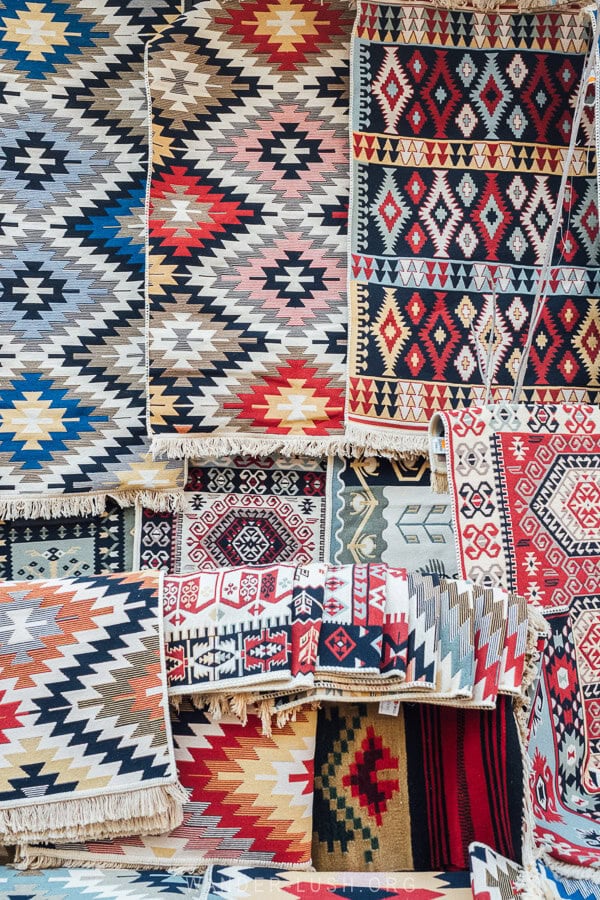
If you’re wandering around in the early morning you will see how the bazaar is used by Korca residents – there are several repair shops where people bring their bicycles
2. Eat lakror at Shija e Saçit
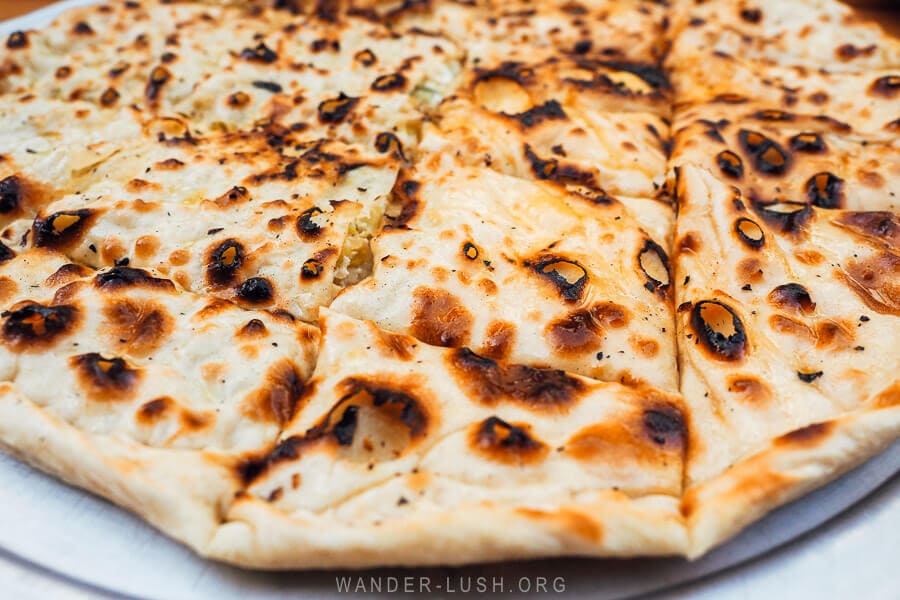
Lakror is a thin burek-like pie that is considered a specialty dish of Korca. It is made by layering sheets of filo dough with a savoury filling, typically some combination of cabbage, spinach, nettle, leeks, onions, eggs, cottage cheese, yogurt and/or lamb. The pie is then baked over a woodfire in a pot covered by a saç, a bell-shaped metal lid that works like a convection oven.
There are several places in Korca where you can try lakror. We were referred to the popular Mik Mak, a bakery on Republic Boulevard. They mainly do takeaway orders, so when we tried to buy lakror by the slice, we were told the kitchen was too busy and we should come back the next morning. We did, and they rudely turned us away for a second time.
A better option is Shija e Saçit, a small restaurant inside the Old Bazaar. A-la-carte pies are cooked to order, and the 40cm size is perfect for sharing between two. There are a dozen different fillings to choose from. If you can’t decide, they can do half-and-half for you.
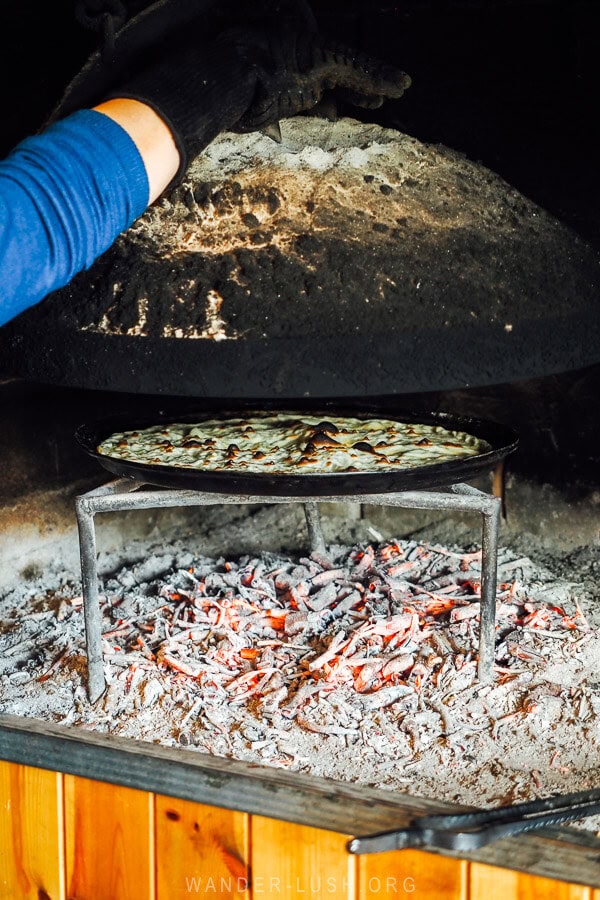
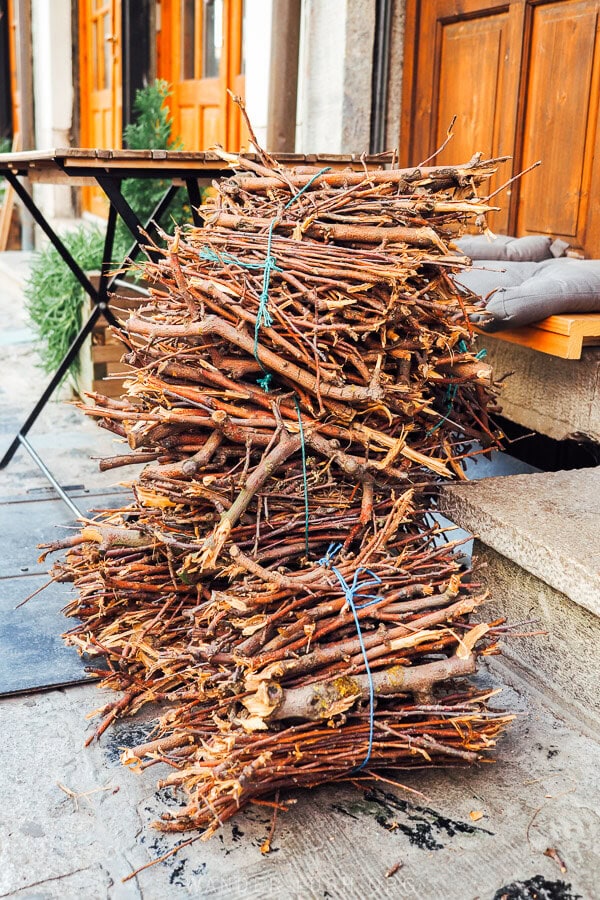
The staff here are very friendly and happy for you to observe the entire cooking process – from dough to hearth – while you wait.
If you happen to be visiting in July, Korca hosts a Lakror Pie Fest (Festa e Lakrorit) to showcase the pastry dish and other local delicacies.
3. Stop by the Iliaz Bej Mirahori Mosque & the Clock Tower of Korca
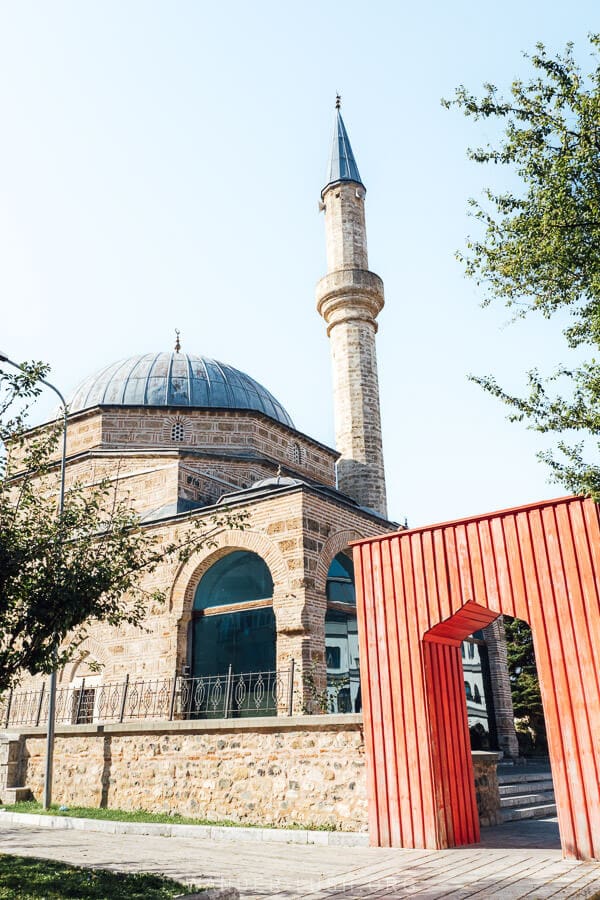
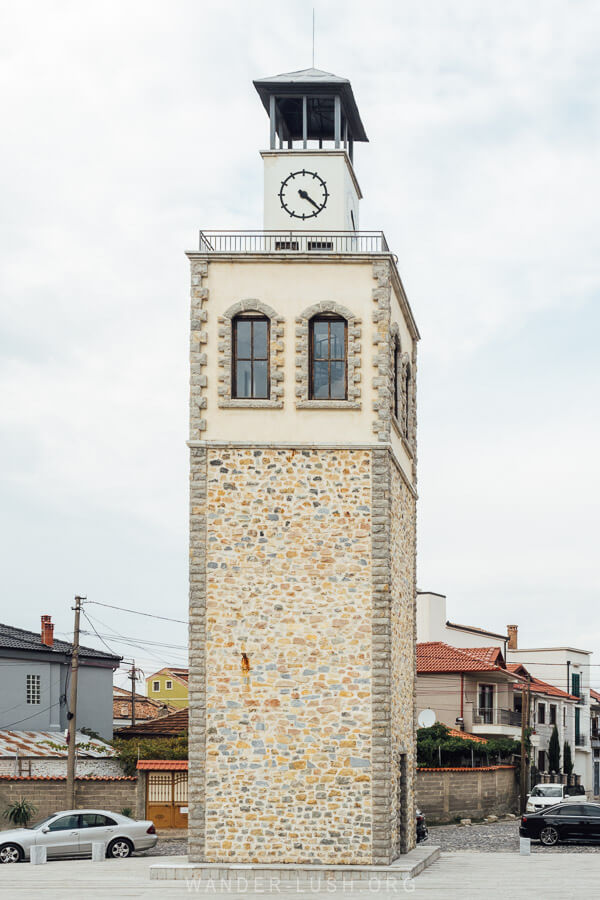
Before you leave the Old Bazaar area, stop off at these two Korca landmarks.
Built in 1496, the Iliaz Bej Mirahorit Mosque is one of the oldest mosques in Albania. It uses a peculiar building technique involving lead cubes. Expert craftsmen from the Ottoman Empire were brought in to aid in its construction. Inside, a series of celebrated frescoes depict Mecca and other important Islamic sites.
The mosque is named after Iljaz Bej Mirahori, the Ottoman-Albanian military commander who credited with founding Korca in the 15th century.
The minaret was ceremoniously torn down in the 1990s on the orders of the Communist regime. Just as Korca’s cathedral was reconstructed (more below), the minaret was rebuilt to mark Albania’s freedom from religious oppression.
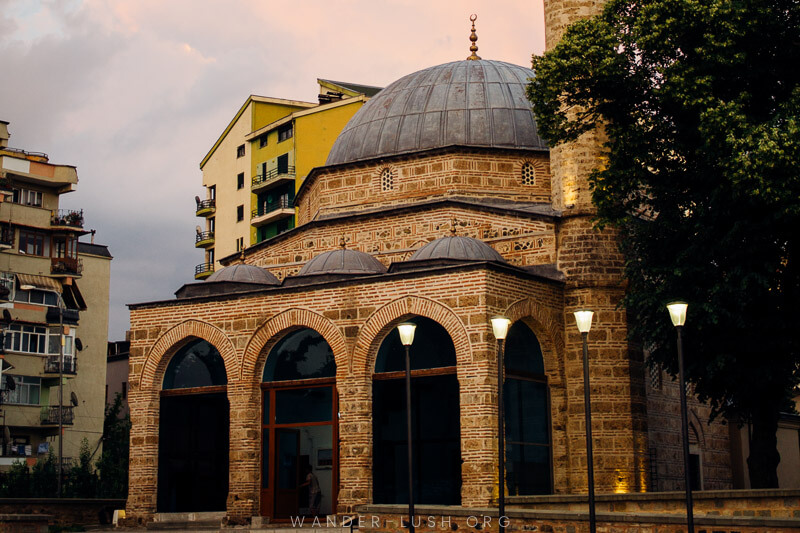
Adjacent, Korca’s stone Clock Tower (Kulla e sahatit e Korçës) is part of the mosque complex and was constructed later in 1784. Sitting on the edge of the square surrounded by parked cars, it looks a bit forlorn. Unfortunately it is no longer possible to climb to the top, but there is another tower in Korca that you can summit – see below.
4. Climb the Panoramic Tower for a view of Korca
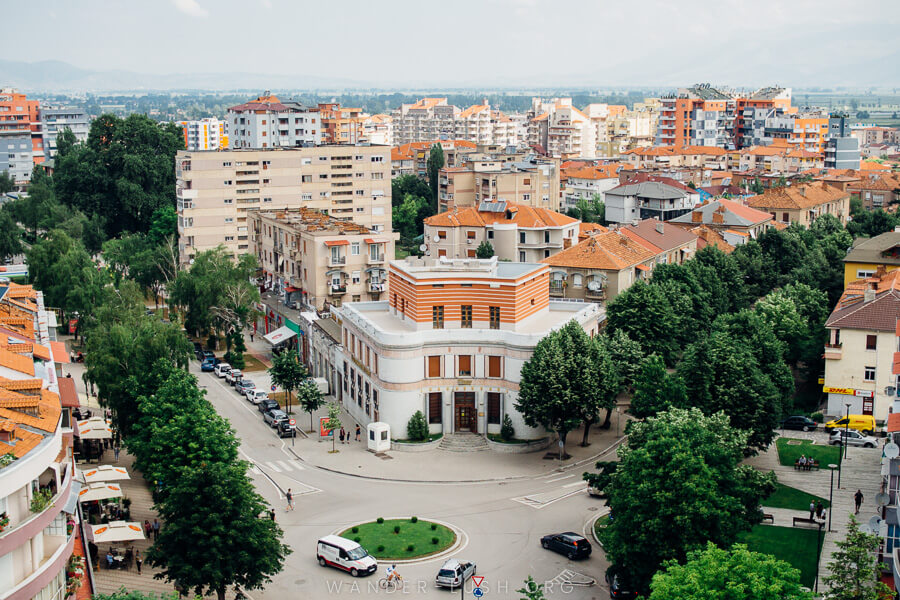
This rather odd building is located at the top of St. George Boulevard, near the (never-open) tourist information office. Known as the Panoramic Tower, it isn’t terribly tall – but it is high enough to give you a pretty incredible view over the city and distant mountains from its top-level observation deck.
From above, Korca almost looks like a model town, with its orange rooftops and perfectly fluffy trees.
The observation deck offers (almost) 360-degree views from the different openings around a disused bar. Looking north, you get a perfect view of the retro corner building that houses the BKT bank. Built in the 1920s, this was the first bank in Albania. It is a great example of Italian Rationalism.
If you are interested in architecture of this ilk, be sure to stop by the very-Deco Majestic Cinema on Republica Boulevard, too.
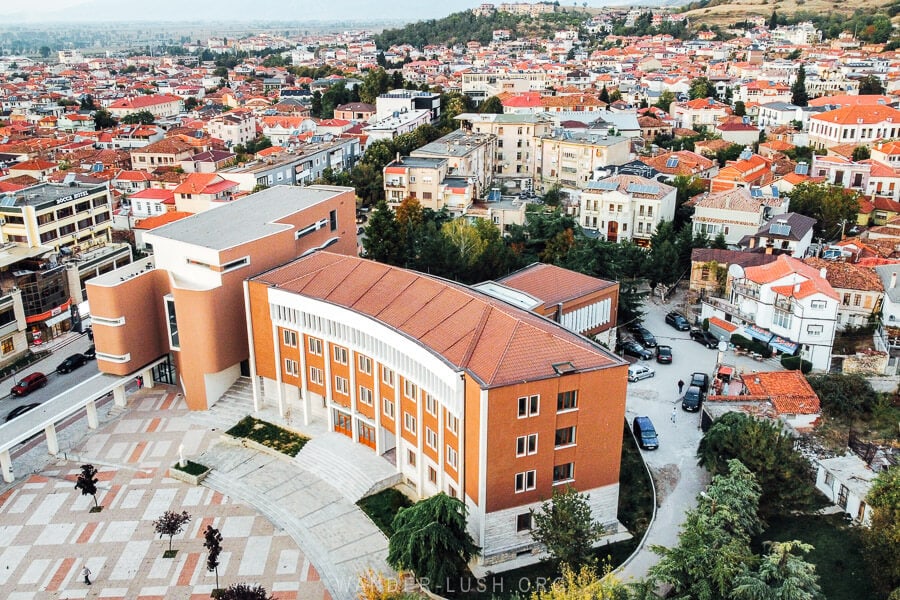
Towards the southeast, you can look all the way down St. George Boulevard towards the cathedral. In summer, the sun sits right behind the cathedral in the morning, so it’s ideal to climb the tower in the afternoon for better light.
The elevator seems to be permanently out of service, so you will likely have to walk up the stairs to get to the top. It’s worth it, though!
Info: Entrance to the observation deck costs 50 lek (cash only). Tickets can be purchased from the cashier at the bottom. The official opening hours during summer are 7am-10pm.
5. Wander down St. George Boulevard (locals’ favourite thing to do in Korca)
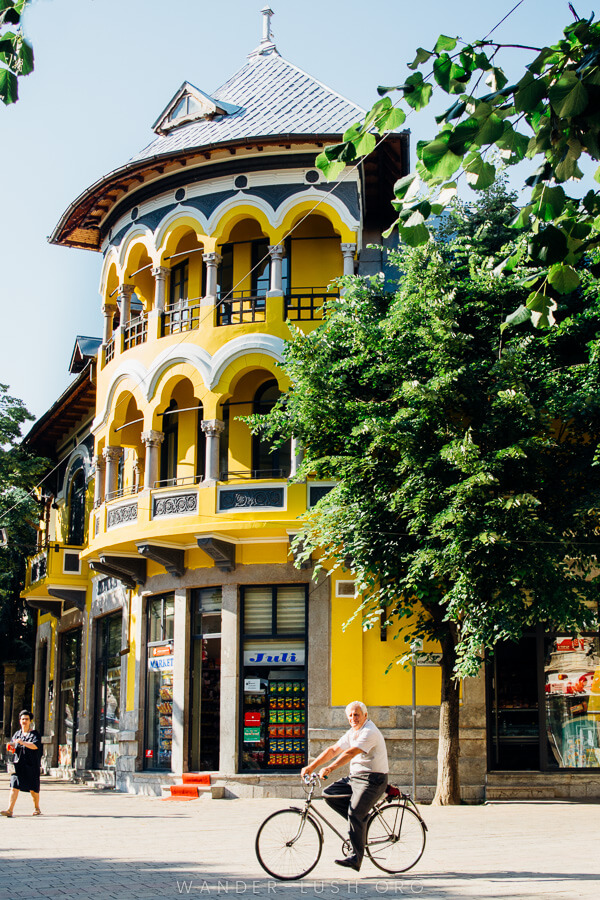
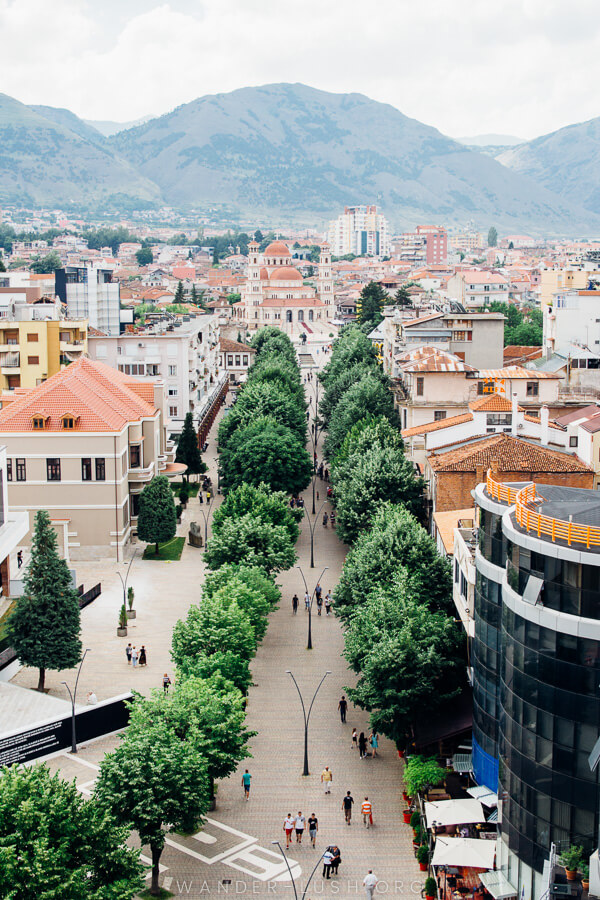
St. George Boulevard (Shen Gjergj) is Korca’s main pedestrian drag. Rows of apple trees stand like a guard of honour, separating foot traffic from the rows of sidewalk coffee shops, bars and ice cream parlours that line both sides of the street.
This is one the places Korca locals come for an evening stroll or xhiro, a much-loved Albanian tradition. The shady thoroughfare is thronging with people at all hours of the day.
There are a couple of points of interest to see as you walk. Starting from the base of the tower, on the eastern side of the street you will notice a memorial sculpture and on the pavement, the outline of a building made with white stones. This commemorates the Church of St. George, which sat on this spot until it was torn down by the Communist regime to make way for a municipal building.
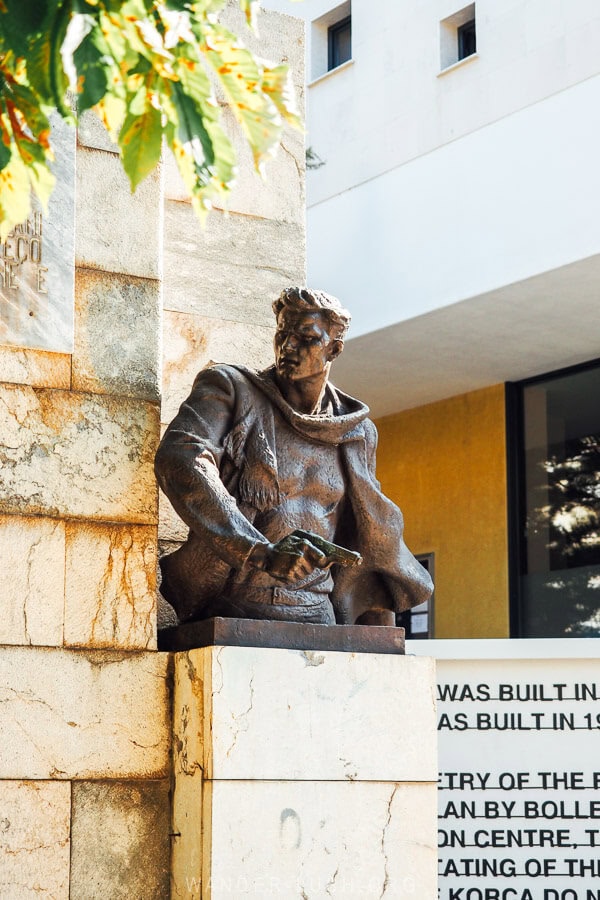
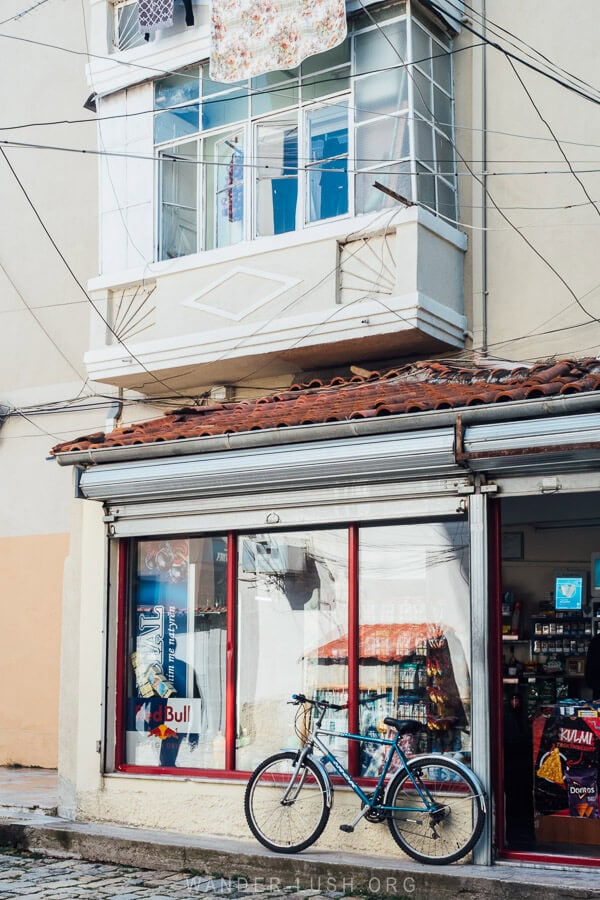
A little further on, you will come to the striking canary yellow corner building pictured above. Known as the Romanian House (Shtepia Rumune), it dates to 1908 and stands as a monument to Korca’s Aromanian community. There is a fantastic photography exhibition inside, which I will get to in a moment.
On the opposite side of the street, the Museum of Education is set inside an old stone schoolhouse known as the Mësonjëtorja. When it opened for enrolments in March 1887, it was the first school to teach children in Albanian language.
Retrofitted into a modern museum, the exhibition here is dedicated to the history of Albania’s national tongue. It documents the ancient language and its two alphabets through a collection of manuscripts, archival photographs and video displays.
Personally I was not a huge fan of this museum – it is (understandably) targeted more towards Albanian visitors than English-speakers. But it’s still worth a walk around if you have time. The house itself, formerly a private residence belonging to the Albanian philanthropist Diamant Terpo, has some lovely details. Entrance costs 300 lek.
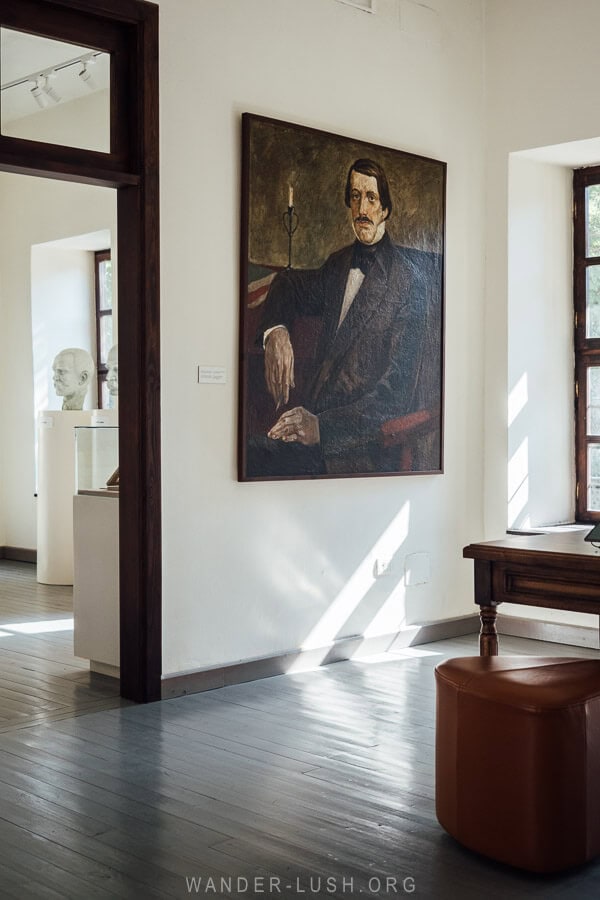
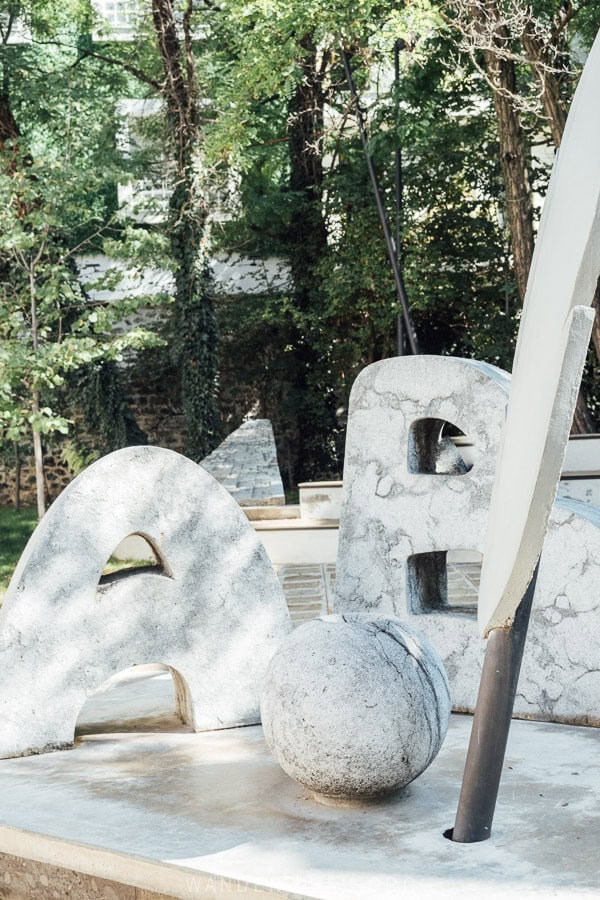
If your feet can take you, walk all the way up to Bulevardi Gjergj Kastrioti and continue your stroll to Rinia Park, the largest park, where you’ll find more bars and cafes overlooking a pleasant green space.
6. Visit the Gjon Mili Photography Museum
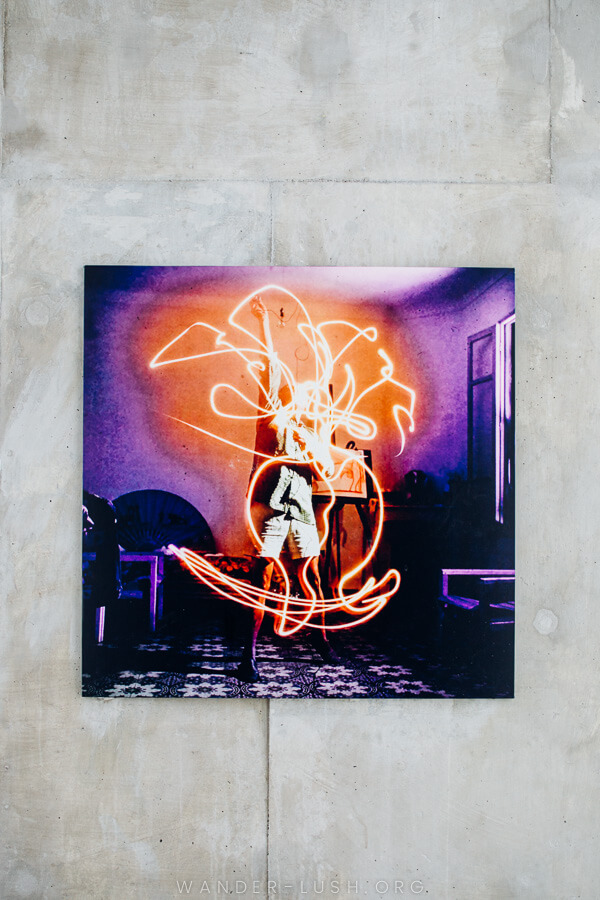
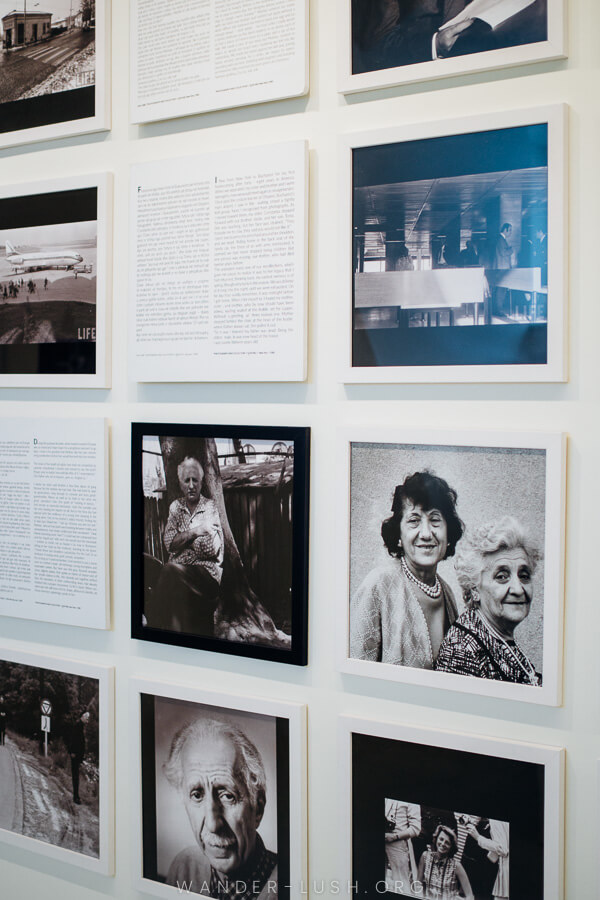
I learned about Gjon Mili when I was at university – but I had no idea the photographer was born in Korca. His museum on the top level of the Romanian House is definitely worth a visit, especially if the knowledgeable curator is around to give you a little guided tour. There’s even a ‘light experiment room’ where you can try your hand at Mili’s signature light painting,
Mili, who was born in Korca in 1904 and raised in Romania, is best-known for being a photographer for Life magazine from the 1940s until his death in 1984. He pioneered experimental light photography, worked with the likes of Man Ray, and counted Pablo Picasso among his portrait subjects.
The Gjon Mili Museum exhibits a huge collection of his most iconic frames alongside touching family portraits and letters penned by the artist. Given his prolific career, Mili’s story is tied in with many important historical events. It’s fascinating to see the moon landing, Watergate, and other milestones told through his photographs – I’m sure you’ll recognise more than a few of the shots from popular culture.
Info: The museum is open Tuesday to Sunday (closed Mondays) from 9am-2pm and 5pm-7pm. Entrance costs 200 lek.
7. Step inside the Resurrection of Christ Cathedral, Albania’s biggest Orthodox church
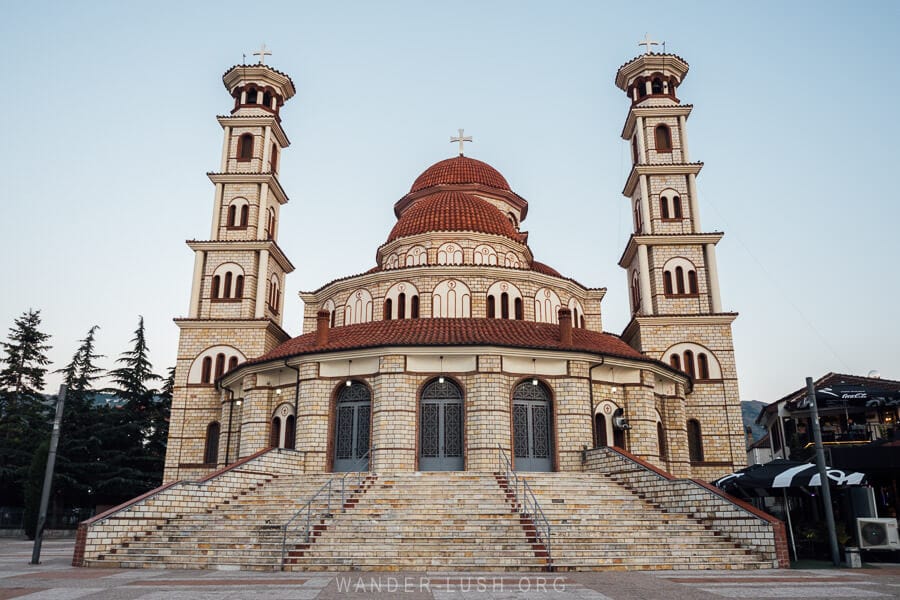
The Resurrection of Christ Cathedral stands proudly at the top of St. George Boulevard and is without a doubt Korca’s defining landmark. Consecrated in 1995, it also happens to be the largest Orthodox cathedral in all of Albania.
Flanked by twin bell towers, the cathedral has a four-tier dome design and is typical of the Byzantine-Revival style.
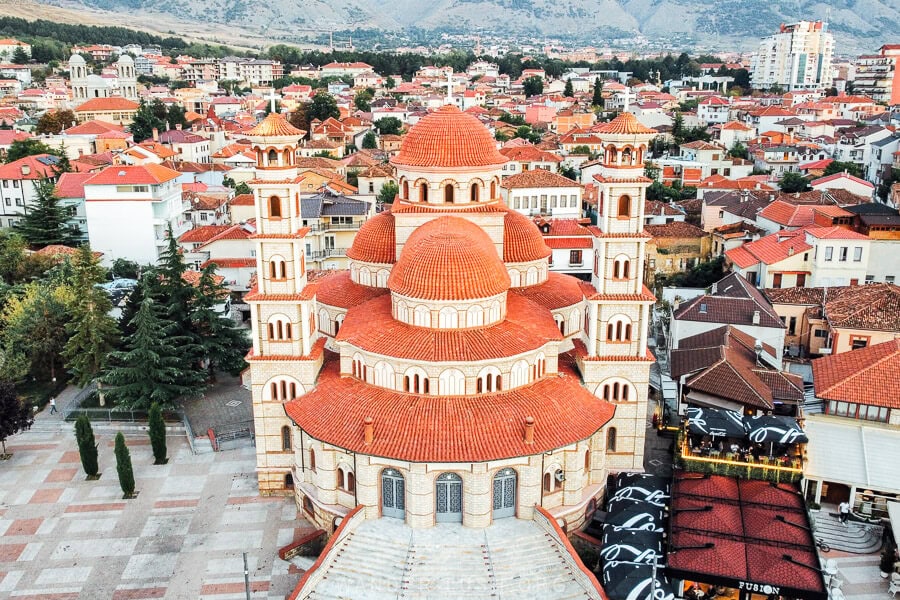
The layout and materials are reminiscent of a Greek church – and indeed it was a Greek architect by the name of Dimitrios Christidis who was responsible for the design. Greece partially patronised the reconstruction (along with Romanian and Aromanian benefactors), intending for the cathedral to fill the gaping hole left in the Orthodox community when Korca’s churches were demolished during the 1960s.
Of the 24 Orthodox churches built in Korçë between the 16th and 18th centuries, only 8 are still standing today. If you’re interested in churches, you should also visit the Church of Christ’s Ascension in Korca, and make a day trip to the town of Voskopoja (see below).
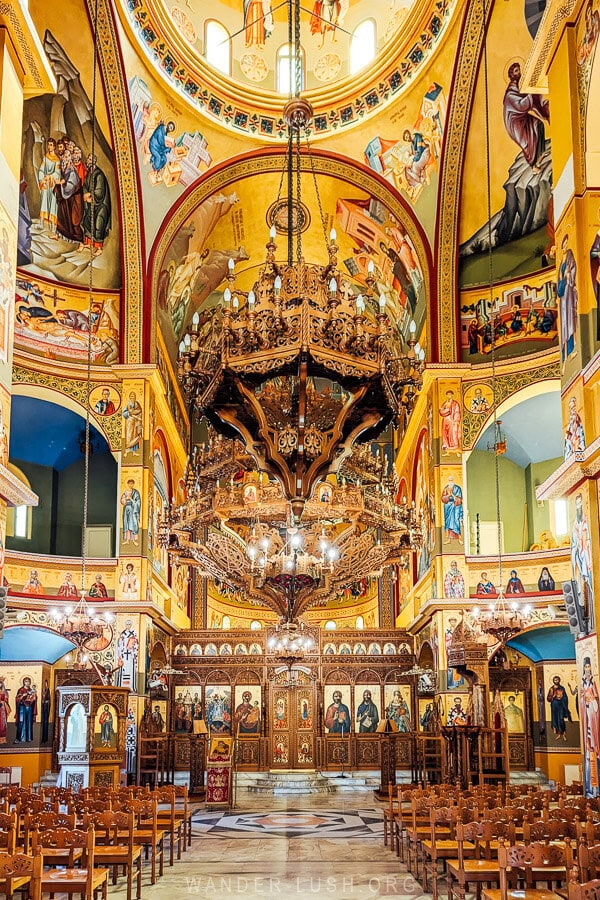
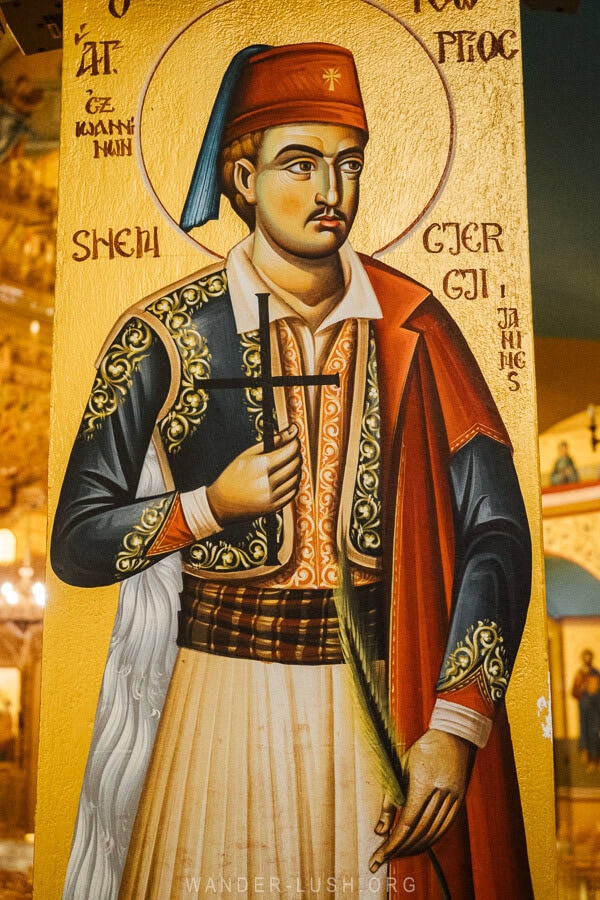
Inside, the Korce Cathedral is cavernous and elegantly decorated with a gold colourscheme. Realistic icons, mosaics and carved wooden lamps are the main features. It bears a striking resemblance to the cathedral in Tirana that carries the same name.
8. Wander the backstreets behind the cathedral to discover Korca’s cute architecture
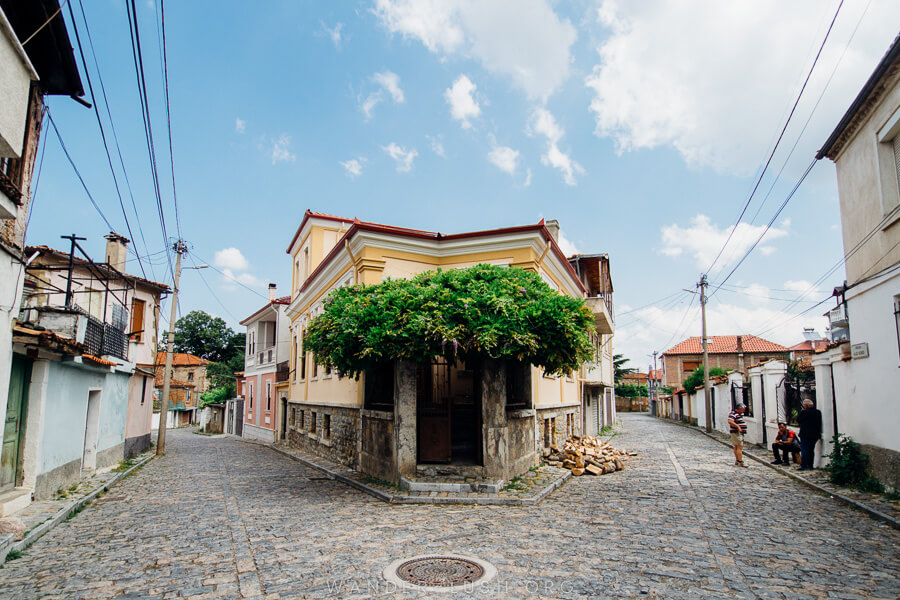
It doesn’t matter where in the world I am, I’ll take any excuse to get lost down a cobbled street. Korca is such an enchanting town, I spent a whole afternoon wandering the backstreets through rows of colourful houses without any destination in mind.
Well, that’s not entirely true: I was in search of one particularly quaint house I had seen printed on the front of a tourist brochure! I eventually found the little lemon corner number with the manhole cover in front, pictured above.
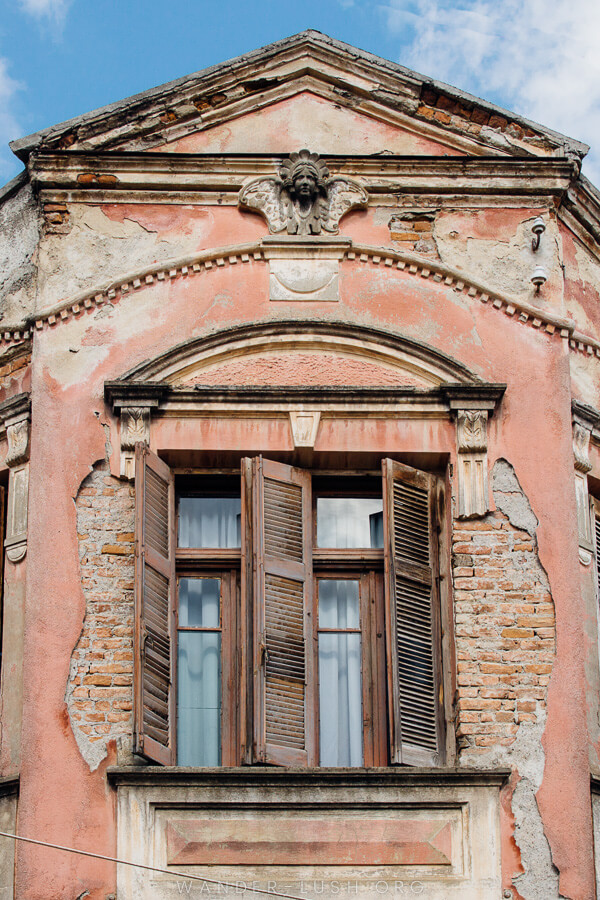
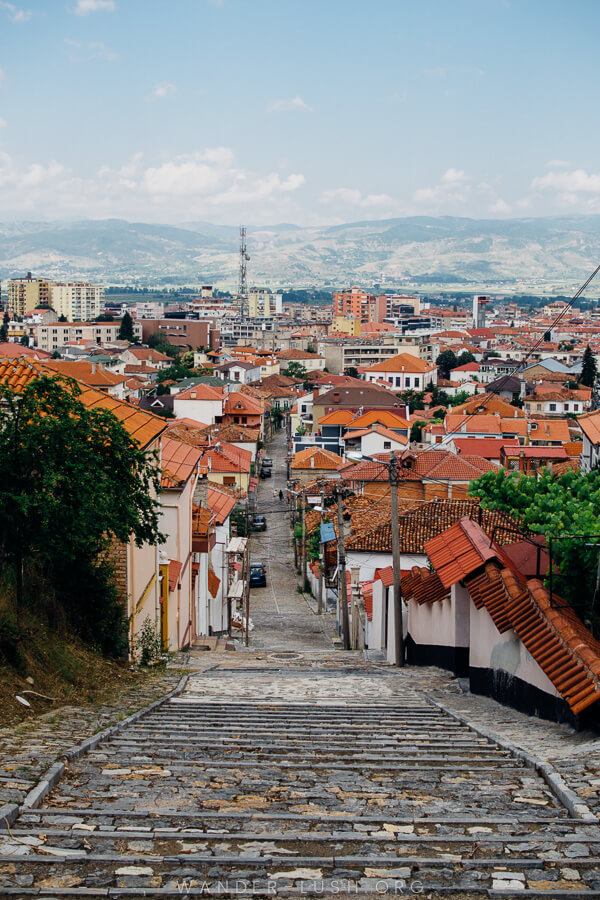
On my travels, I stumbled on some incredible facades. Lurking amongst them is Korca’s old French Lyceum where Enver Hoxha infamously studied before joining as a member of faculty.
If you have time for another museum, Korca’s Archaeological Museum is located in this area. Housed inside a typical 1840s-era mansion, it mainly deals with the neolithic period. I honestly found the exhibition a bit underwhelming – but the lovely curator made our visit worthwhile. He even allowed us to see inside the house next door, another Ottoman-style mansion that is undergoing restoration.
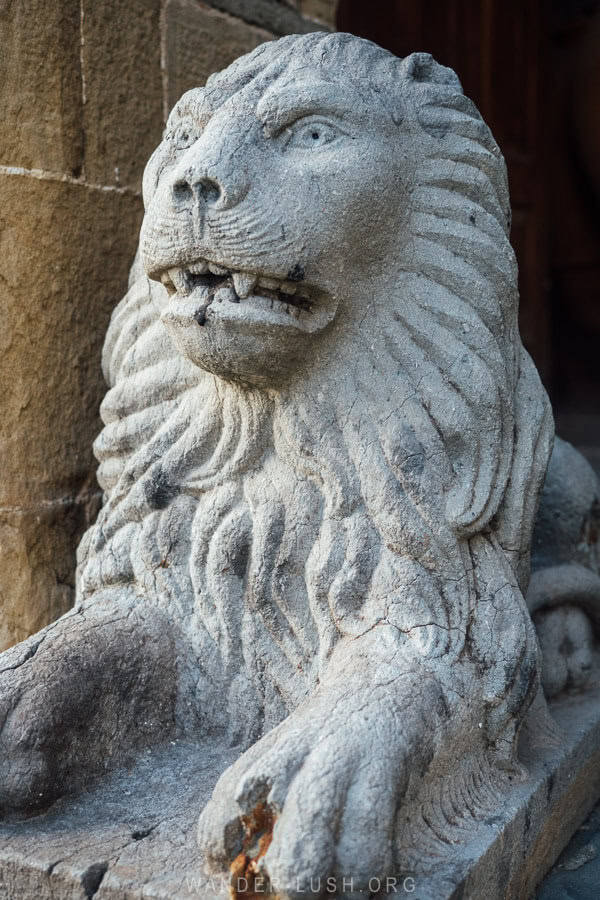
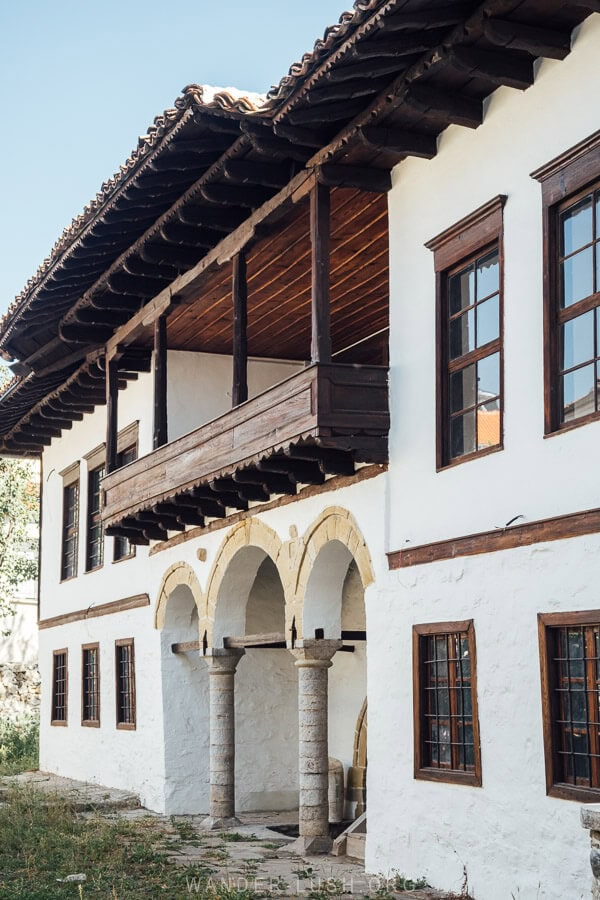
I met some lovely people on my walk through Old Korca, including an old woman who clasped both my hands and spoke to me in Albanian for a full three minutes, not minding that I couldn’t comprehend a single syllable of her gushing pleasantries.
If you love street photography, then I highly recommend setting side a few hours to walk through the labyrinthine streets behind Korca Cathedral. Some of the cobbled alleys turn into shallow stairs that track up the hillside towards the Martyrs’ Cemetery and viewpoint – more details below.
If you fancy strolling with a local, Free Walking Tour Korca focuses on this area while also taking in the city’s major landmarks. We did the evening tour last time we were in town and really enjoyed it.
9. Immerse yourself in icons at the National Museum of Medieval Art
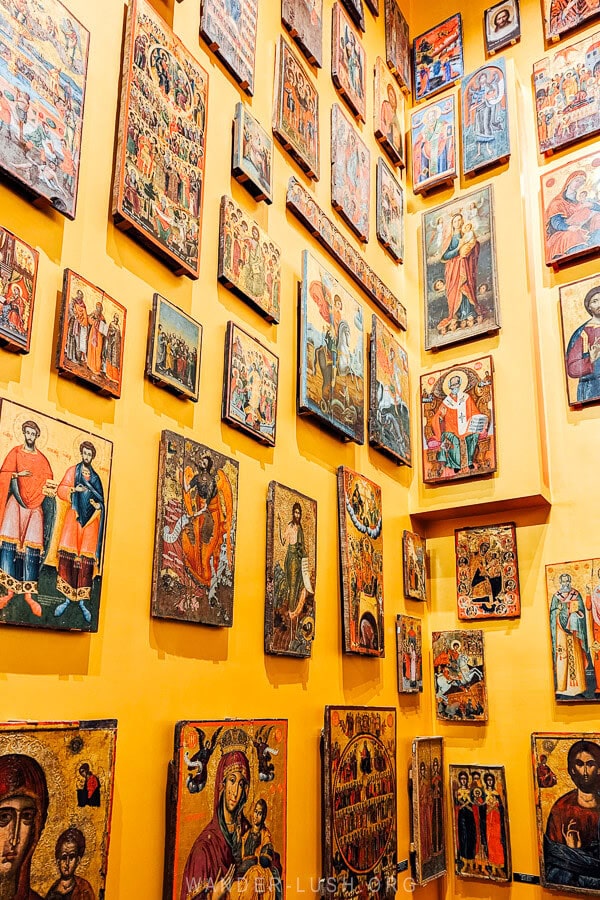
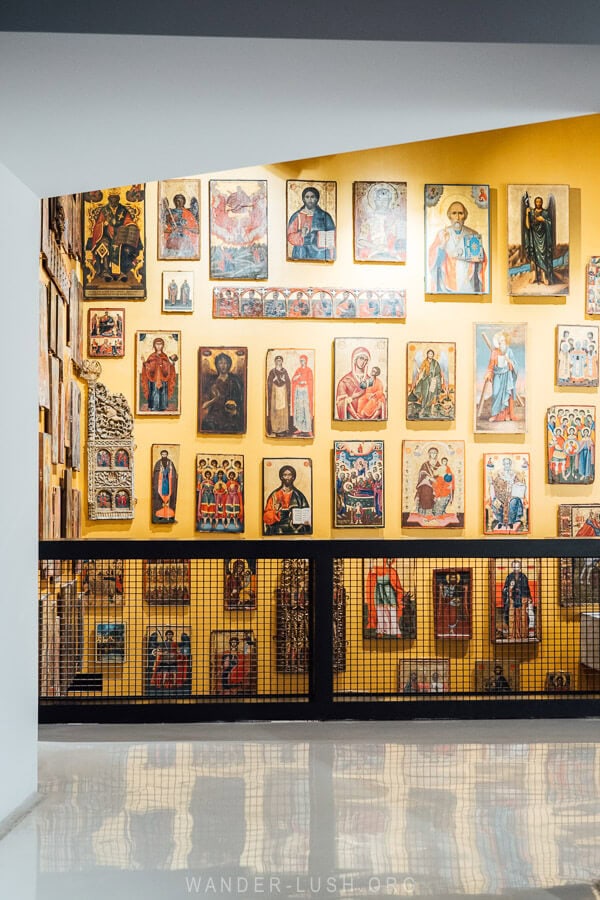
If you only have time for one museum in Korca, make it this one. At 700 lek per person, the National Museum of Medieval Art is definitely on the expensive side (I think that’s the most we have paid for any museum in the Balkans) – but I really think it’s worth it. We enjoyed it so much, we went back for a second round when we revisited Korca.
Located at the eastern end of the city, a 20-minute walk from the centre, the modern museum was purpose-built in 2016 to house 7,000 religious objects collected from across Albania, mostly Orthodox icons crafted from wood, metal and stone. The collection includes a Byzantine icon of Archangel Michael that has been dubbed the ‘Mona Lisa of the Balkans’ plus a number of works by Onufri, the famous icon painter who was born in Berat.
As you enter, the first thing you see is the imposing ‘Golden Wall’, a 9.5-metre-high wall covered from top to toe with 16th-century icons. You could literally stand here for hours admiring the intricacies in the woodwork and the flourishes in the paintings.
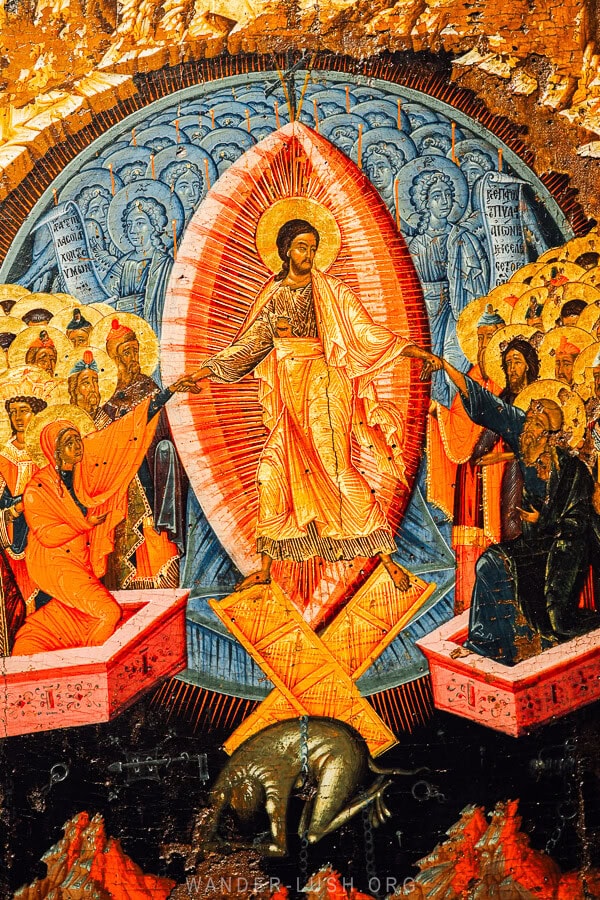
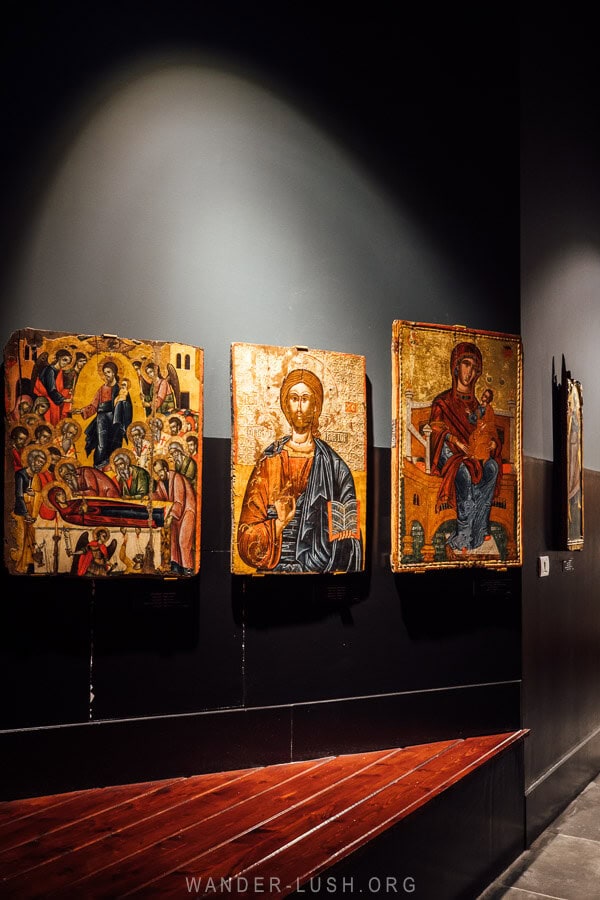
The building itself is a masterpiece, its layout designed to mirror the different elements of iconographic art. Visitors’ movements are choreographed around open staircases, vast gangways and tight hallways, with colour and light employed to add drama and emphasise different works.
Much like the Church of Leus outside Permet where you can see resplendent Orthodox paintings in situ, this museum is nothing short of a full body experience.
The free audio tour adds colour to the works and the artists behind them. To access the guide, you will need to connect to the museum WIFI and download the app. Remember to bring your headphones with you!
Info: The museum is open 9am-4pm Tuesday to Saturday and 10am-3pm Sunday (closed Mondays). Entrance costs 700 lek.
10. Grab a beer at the Birra Korca Brewery
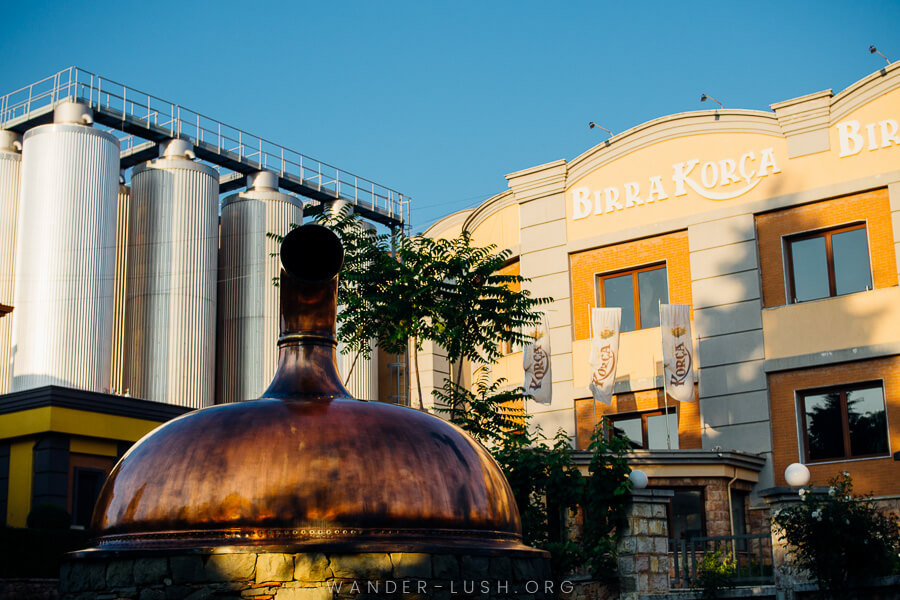
Korce has been a centre of beer production for decades and is the birthplace of one of Albania’s most famous beer brands: the eponymous Birra Korça.
Founded in 1928 by an Italian investor, this was the first beer ever brewed in the country. Production shut down during the war, then the brewery was nationalised during communist times. It finally reopened under new leadership in 2004. Today, Korca’s beer factory churns out an eye-watering 120,000 hectoliters of ale every year.
Now I’m not exactly a beer lover, but even I could appreciate the delicious flavour. Made using natural spring water from the nearby Morava Mountain, Blonde Birra Korca is light and fresh. They also do a dark lager and a dark ale.
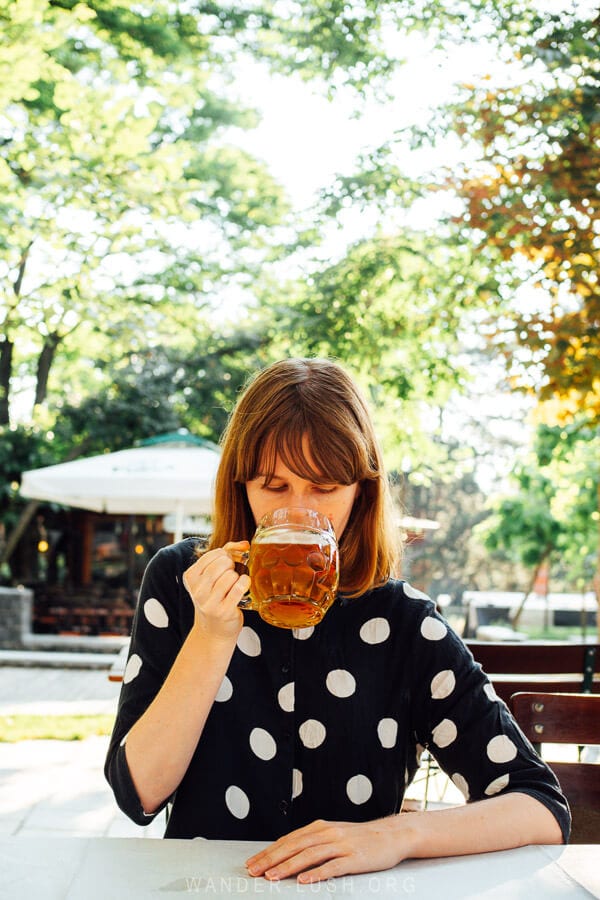
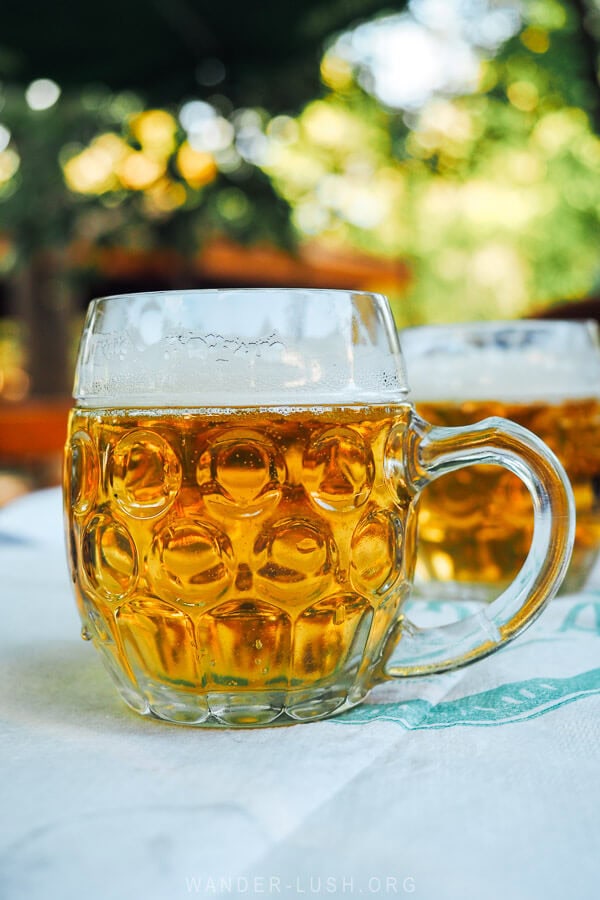
You can taste test the whole range (and then some) at the Birra Korçë beer factory, which doubles as an outdoor restaurant and beer garden.
Located on a leafy lot in the city’s east – an easy 1.5km walk from the Old Bazaar via Bulevardi Fan Noli Korçë (close to the National Museum of Medieval Art) – this is honestly one of the nicest places in the city to hang out. Fresh kegs are on tap, and the kitchen serves a great menu of salty nibbles.
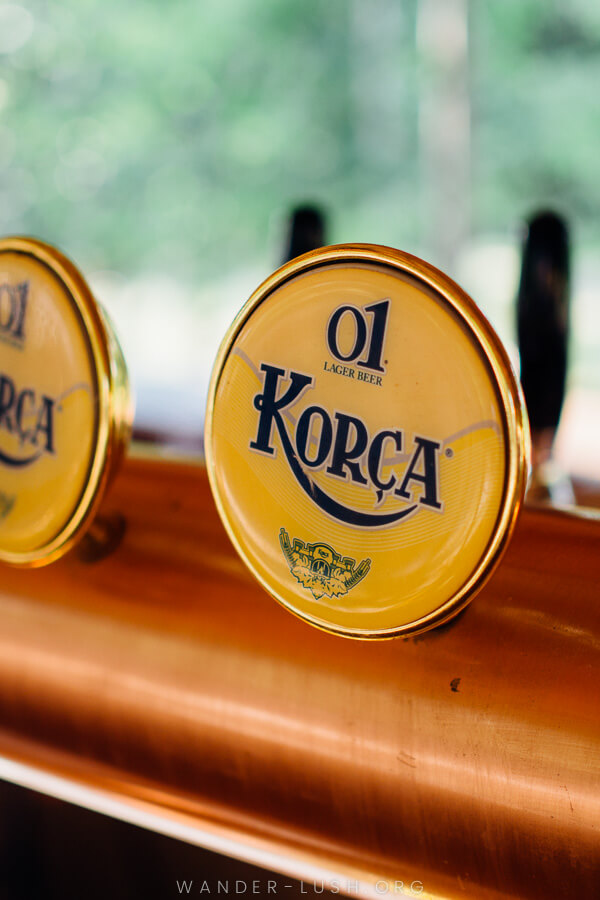
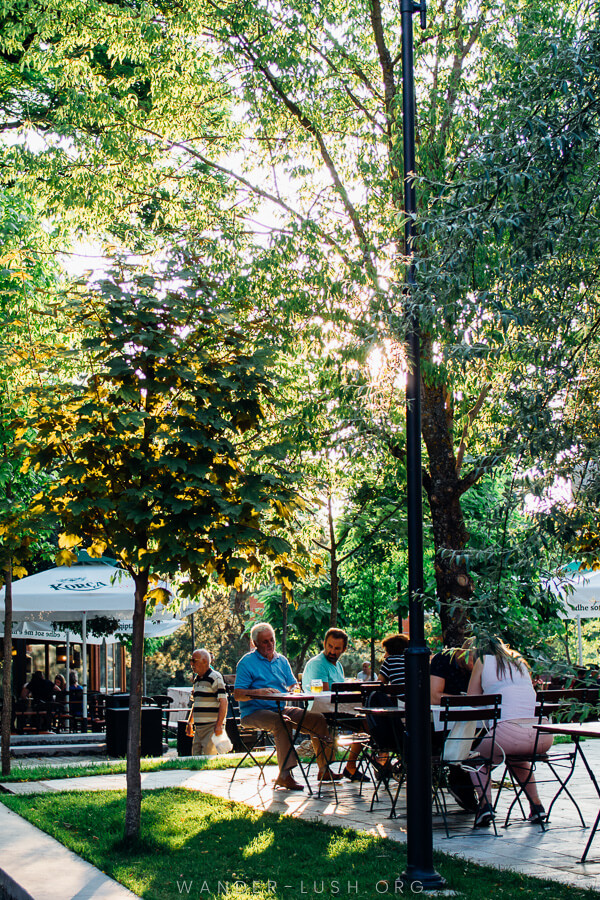
I recommend visiting in the late afternoon when the light filters through the trees and groups of locals congregate. It’s a very family friendly place with a friendly atmosphere. You can walk up to see the beer brewing facilities behind the garden, and maybe even tour the brewery and do a proper beer tasting.
Info: The bar-restaurant is open daily from 8am until midnight. Every August, the brewery hosts a 5-day Beerfest.
11. Walk up to the Martyrs’ Cemetery or Cross of Morava for a view
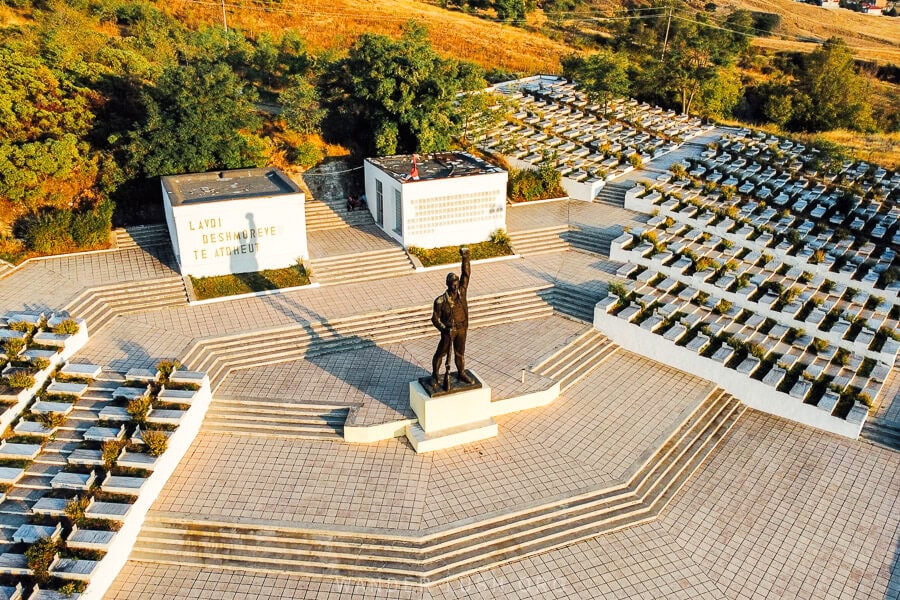
Experiencing golden hour at the southwest-facing Martyrs’ Cemetery (Varrezat e Dëshmorëve) was one of the highlights of my visit to Korca. It takes around 30 minutes to reach the hill on foot from the brewery, following the road the whole way.
The cemetery contains hundreds of uniform, white headstones engraved with the names of partisan fighters who lost their lives during WWII. The centrepiece of the ensemble is a larger-than-life statue of a partisan fighter, gun brandished and fist raised towards the heavens.
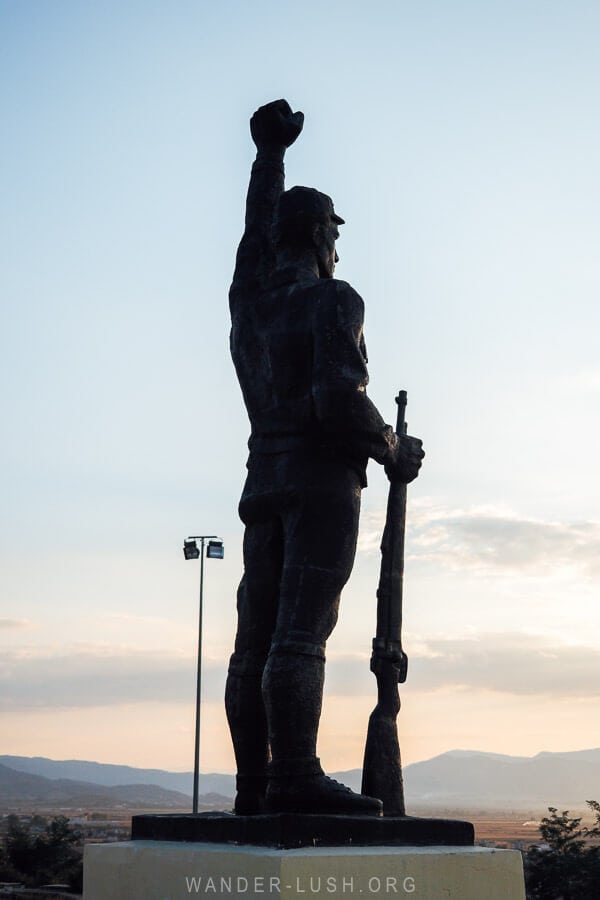
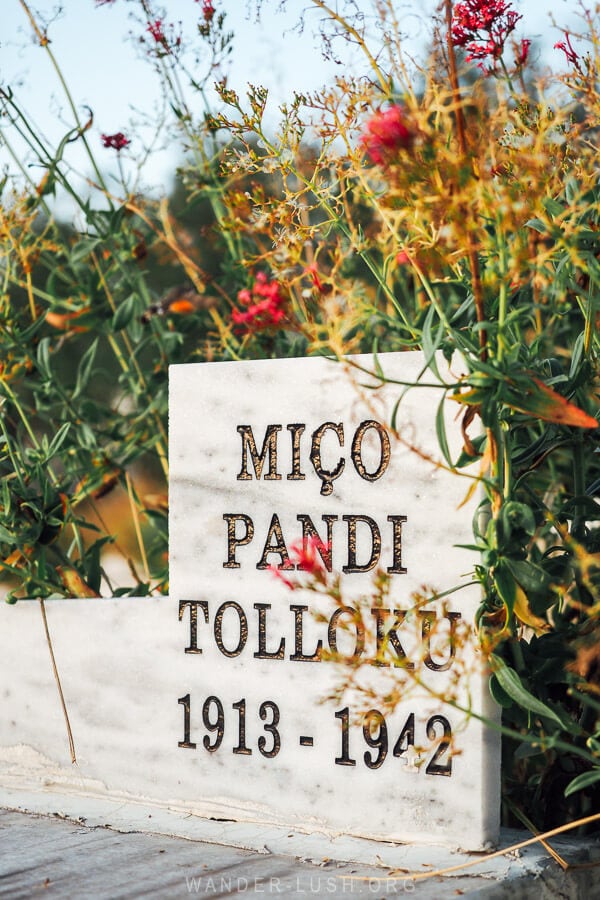
You can take in the whole city of Korca from this vantage – from the old streets and the cathedral through to the concrete apartment blocks and the factory smokestacks in the distance.
Once the sun has set, you can take a more direct route via the big, broken stone staircase to get back down to the city centre. Follow the cobbled street all the way to the end, and you will come out near the Archaeological Museum, behind the Cathedral.
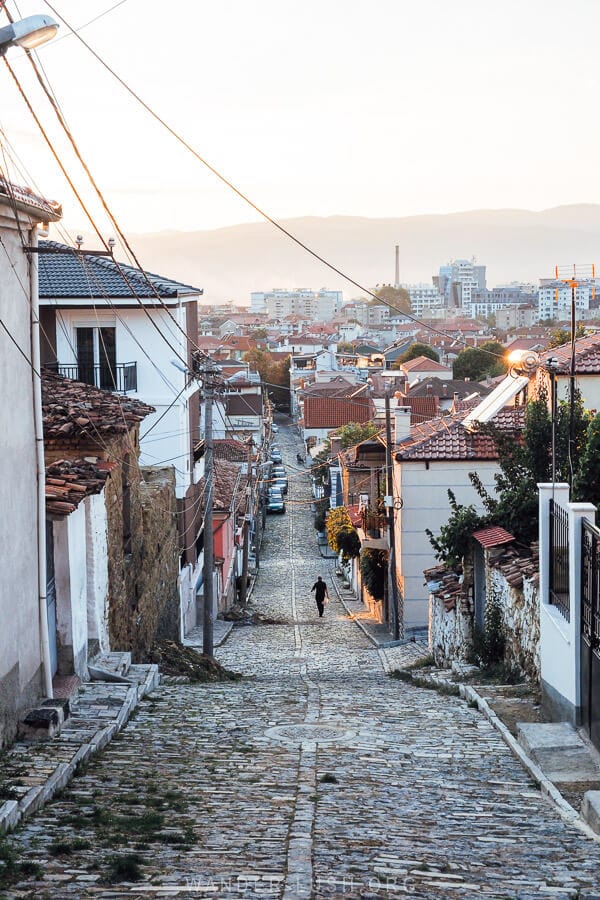
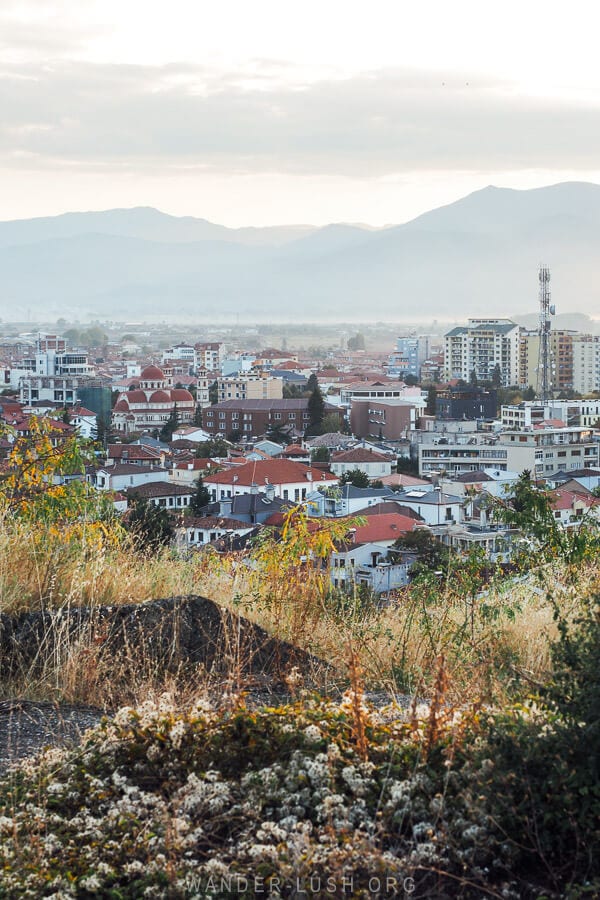
If you’re up for a hike, it’s possible to continue another 4.5 kilometres on foot up to the Cross of Morava (Kryqi Moravë). Perched at the crest of the hill, the giant white crucifix marks a panoramic viewpoint. There is also a small chapel, the Church of Saint Elias, at this location, plus a Hollywood-inspired ‘Korca’ sign.
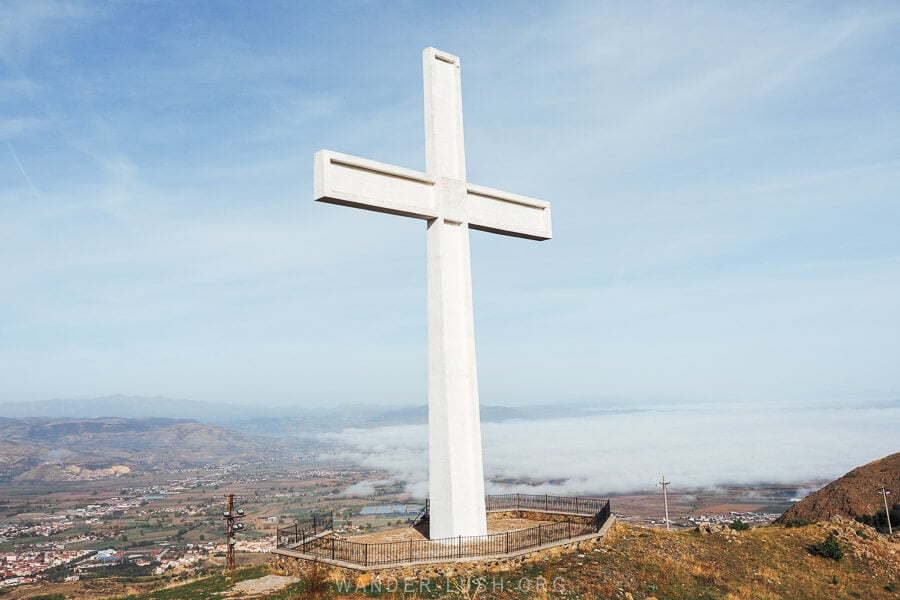
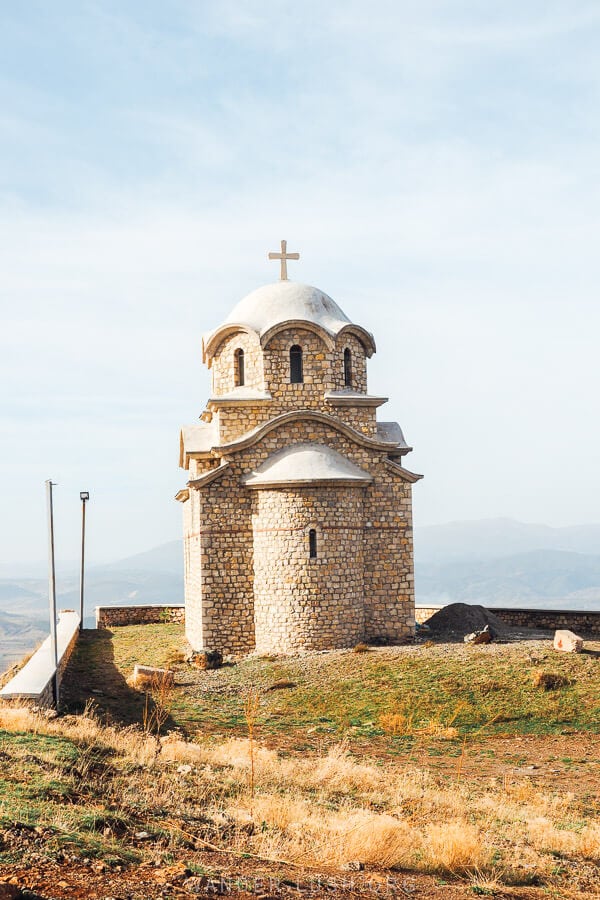
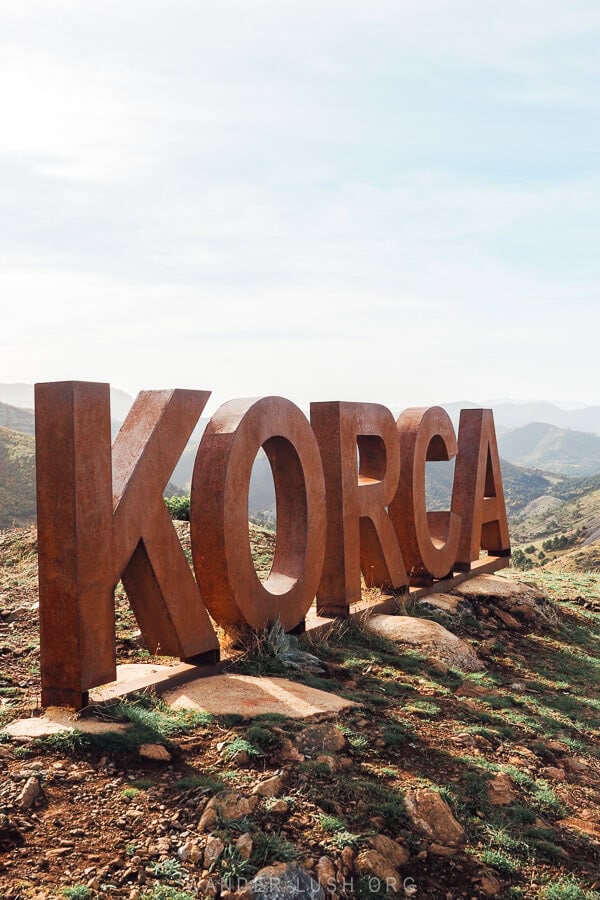
We did this in two parts: First, we walked up to the cemetery for the sunset, then later we drove to the Cross just after dawn. Both afford very beautiful views, but I much preferred the sunset – the light was amazing and in autumn, you’re more likely to get clear skies in the evening (the morning was very hazy).
12. Take a day trip to Voskopoja
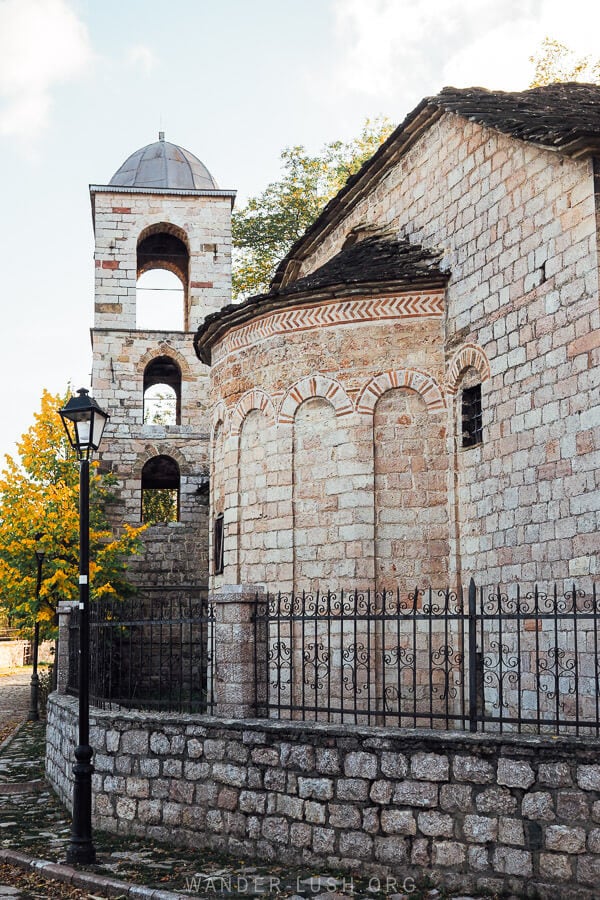
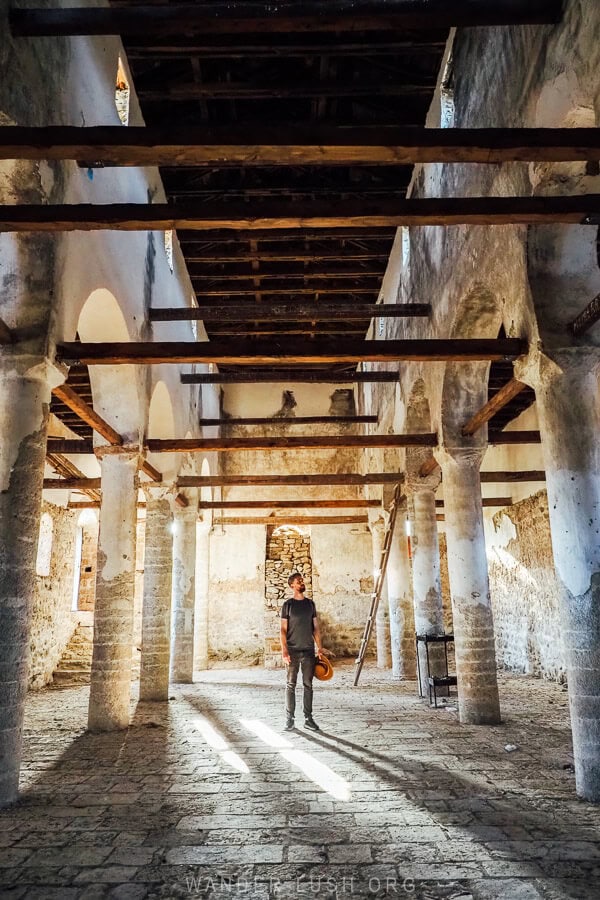
If you have more time in Korca and you’re looking for a day trip, Voskopoja is an ideal candidate. This small town 20 kilometres outside Korca can be reached in around 30 minutes when travelling by car.
In the 18th century, Voskopoja was the cultural capital of Albania’s Aromanian community and a bastion of commerce, literature and education. The first printing press outside Istanbul in the Ottoman-controlled Balkans was housed here.
Unlucky for us, we only managed to see two of the half a dozen churches we had bookmarked – the rest were closed for restoration and covered in scaffolding. We did manage to get inside the 1751 Profeti Ilia Monastery, which almost redeemed Voskopoja with its majestic light.
Where to eat: Best Korca restaurants
Aside from the venues already mentioned above, here are a few more of my favourite eateries in town where you can eat typical Albanian cuisine and sample local specialties such as lakror.
Vila Cofiel
My favourite restaurant in Korçë is Vila Cofiel (we ended up eating there no fewer than three times). The balsamic pork and the house salad are both amazing. It’s a student favourite, so portions are large and prices are good. Hours & info here.
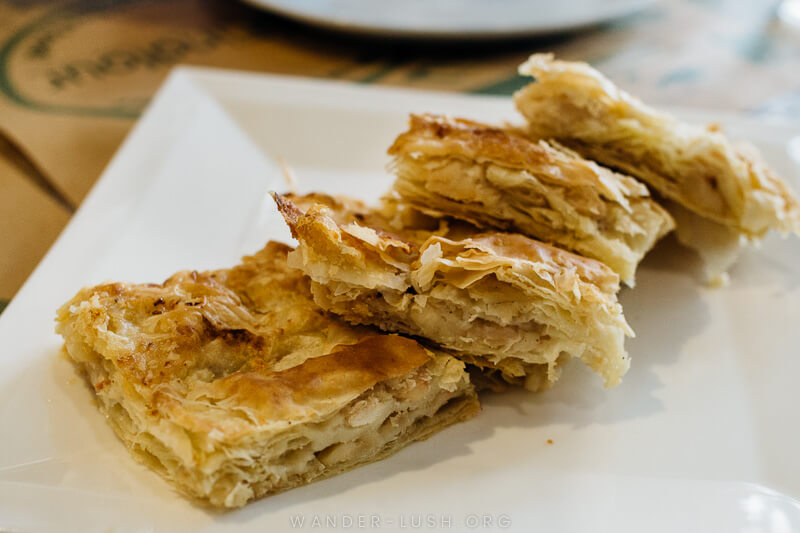
FindFour
We stumbled on the trendy cafe on Boulevard Republika (Bulevardi Republika) by accident. The white bean lakror here is extremely delicious, and they do a mean handmade pasta. We also enjoyed the chicken, bacon and almond risotto. Hours & info here.
Taverna Vasili
Taverna Vasili has a cosy dining room and an outdoor terrace. This is a great place to try Pacavure Korce, a regional dessert that’s a bit like baklava but made with orange juice. Hours & info here.
Fix si Qëmoti
This Albanian grill joint inside the Old Bazaar serves typical meat-oriented fare along with salads. This place seems popular with locals and is a great spot for a casual lunch. Hours & info here.
Korca map
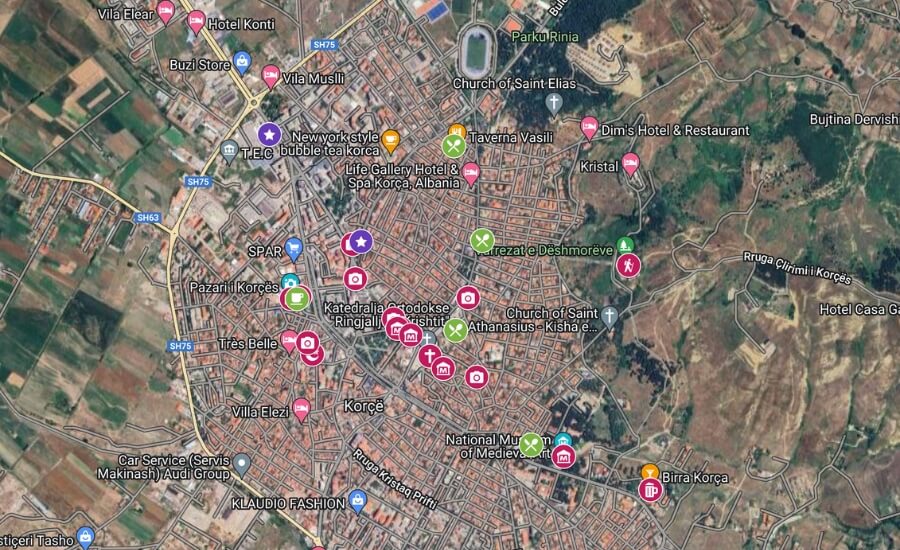
How to get to Korca
By car
Korca is 165 kilometres (103 miles) from Tirana via the State Highway 3 that skirts the shore of Lake Ohrid. If you are travelling this route, I highly recommend stopping off in the village of Lin.
Alternatively, you can approach Korca from the south via the newly sealed road from Gjirokaster and Permet. It follows the Vjosa River and is incredibly scenic – a real pleasure to drive. Leskovik and the Melesin Distillery are a must-visit on this route.
It is quite easy to find a carpark in Korce. There is a small lot inside the Old Bazaar, or you can park on the main street for a fee of 50 lek per hour. When you pull in, an attendant will find you and issue you with a paper ticket that you must display on your dashboard. Old school!
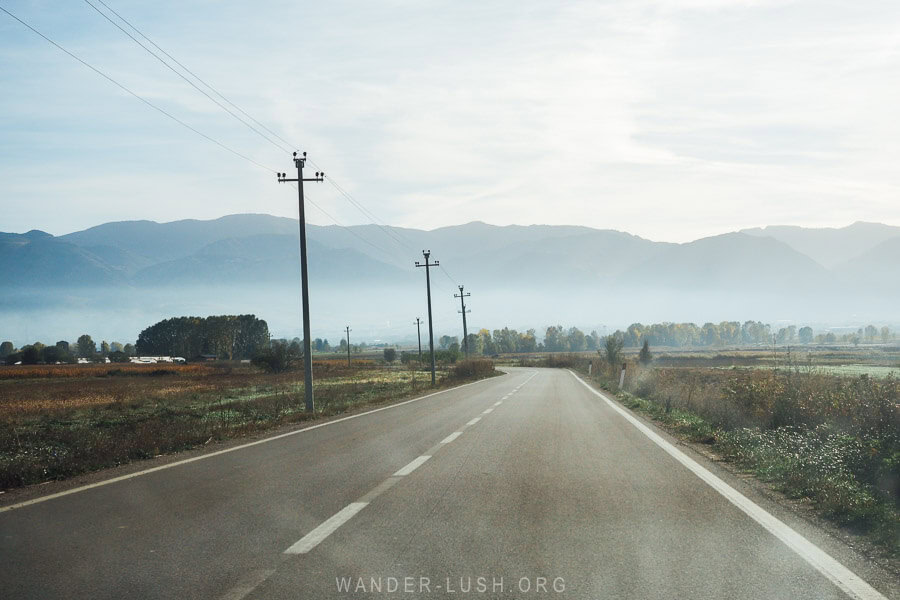
By bus
There are regular buses to Korca from Tirana’s East Terminal (3 hours travel time; 700 lek), Berat (4 hours travel time; 500 lek), Saranda (5.5 hours travel time; 600 lek) and elsewhere in Albania.
Check times and fares on the Gjirafa Travel website.
Korca is a convenient stopover point when travelling between Albania and Greece. In the past, we have crossed the border to/from both Thessaloniki and Kastoria from Korca. See my tips below.
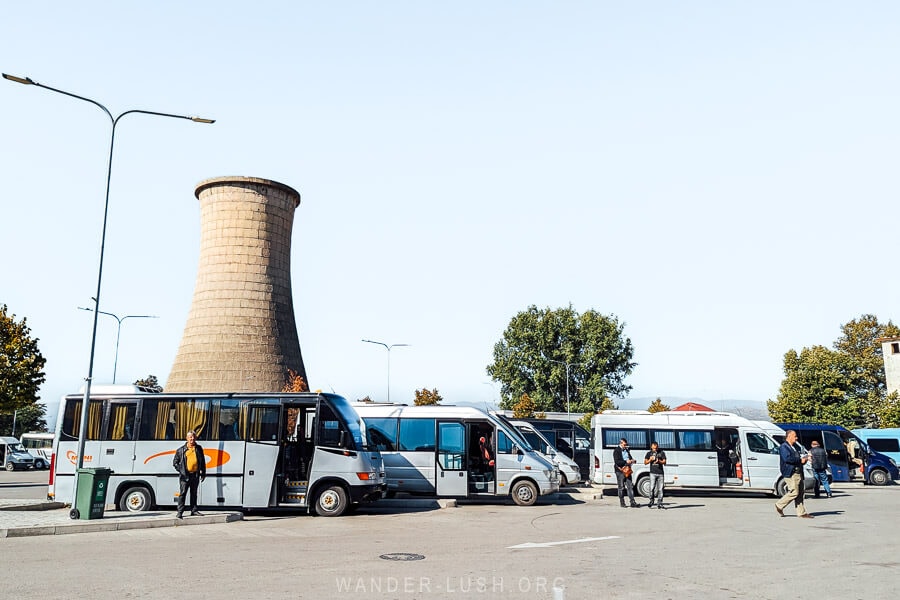
Onward travel from Korca to Greece
Korce is just 35km from the Greek border by road, making this the ideal departure point to cross from Albania into Greece. The journey to Thessaloniki takes around 6.5 hours by coach. There are several companies that run two or three daily services.
On the advice of tourist information, we went directly to one of the bus company offices on Bulevardi Gjergj Kastrioti (behind the observation deck) rather than going up to the bus station. Staff were very friendly and helpful. Our direct tickets to Thessaloniki cost 2,450 lek (24 USD) per person at the time we travelled.
I recommend purchasing tickets a few days in advance in case seats sell out. Our bus departed at 9.30am from the office in town, and we noticed that there were several other services at midday and in the early afternoon.
On our most recent trip, we travelled between Korca and Kastoria. Unfortunately there don’t appear to be any bus services between the two cities – in the end, we hired a taxi to take us across the border for 50 EUR. Travel time is around 60 minutes.
More ideas for Albania
Things to do in Korca: Pin it
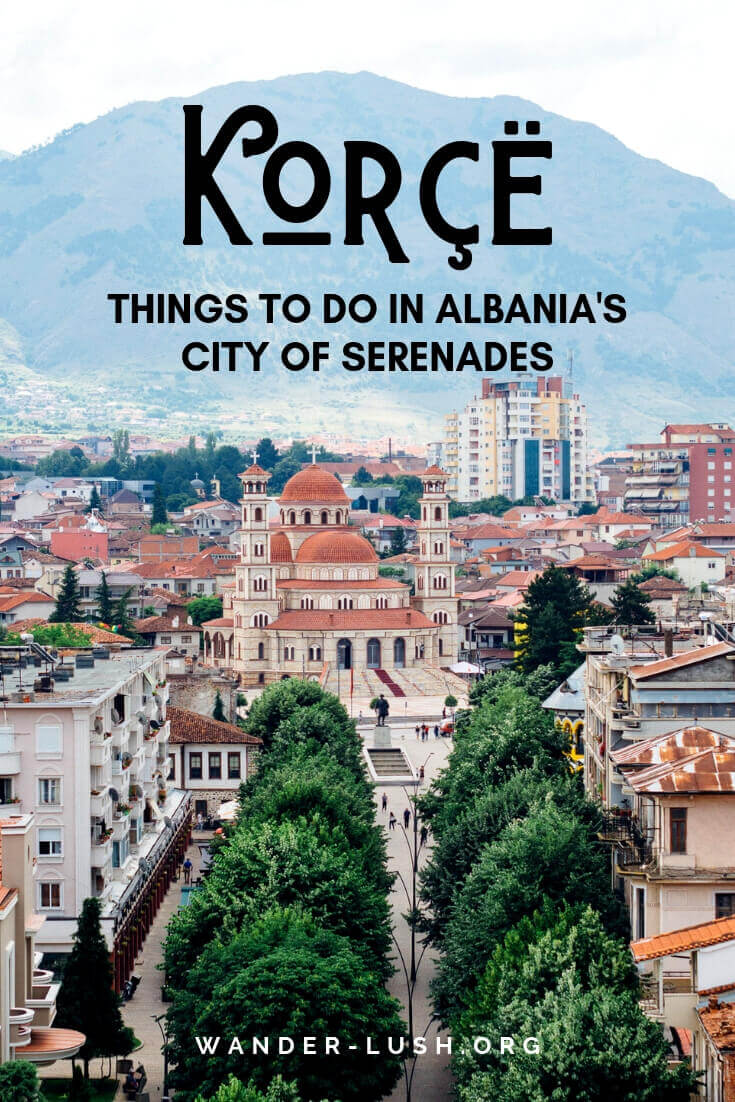
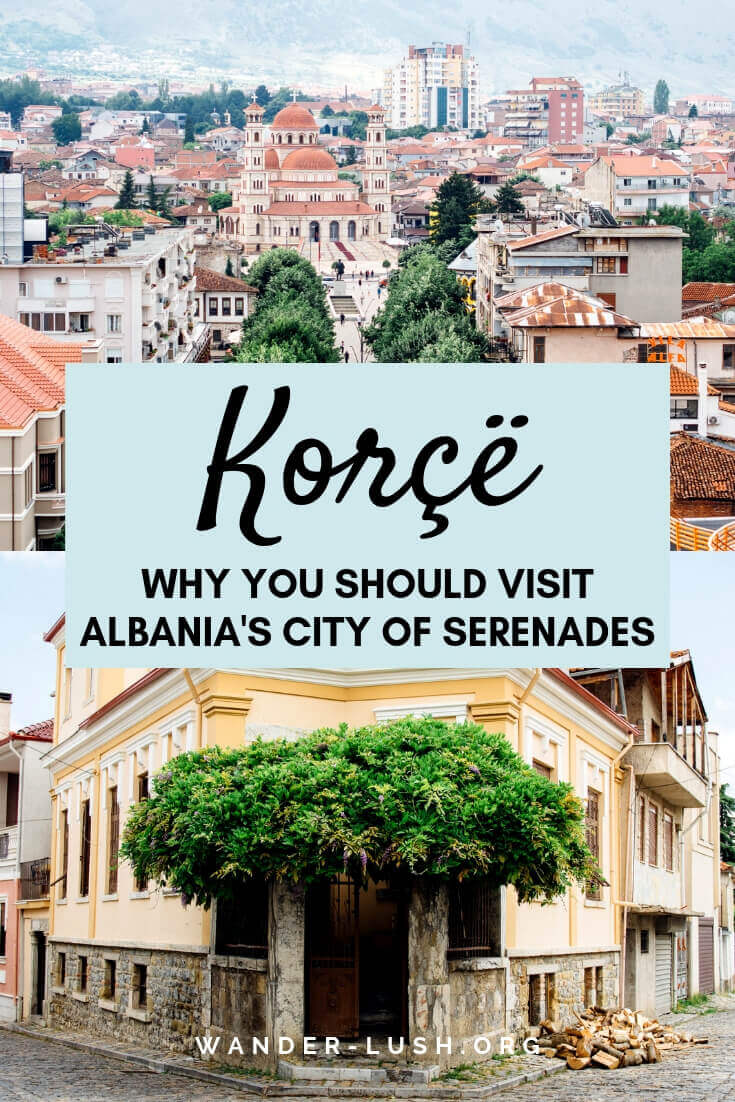
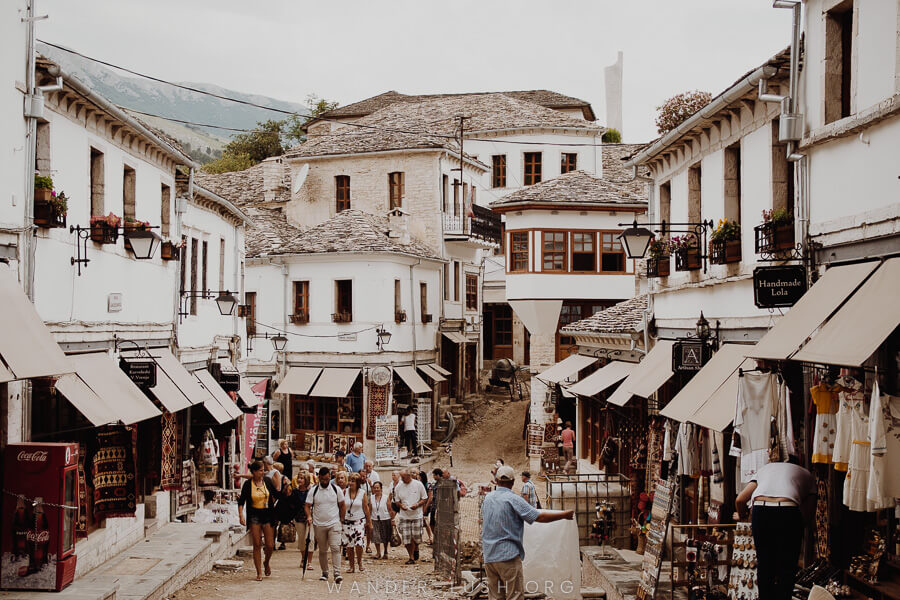
Albania Travel Guide
Discover insider tips, itinerary inspiration, and all the best things to see, do and experience in Albania!
Albania Essentials
My favourite resources and tools for planning a trip to Albania.
More from Albania
Albania Travel Guide
Discover insider tips, itinerary inspiration, and all the best things to see, do and experience in Albania!



